New Caledonia is a beautiful island located in the South Pacific Ocean. This small island is known for its rich biodiversity and unique ecosystem. One of the most interesting aspects of New Caledonia’s wildlife is its birdlife.
There are over 150 species of birds found on this island, many of which can only be found in this part of the world. The birdlife in New Caledonia is a reflection of the island’s complex and diverse history, with many species evolving in isolation over thousands of years.
From colorful parrots to rare pigeons, the birds of New Caledonia are a fascinating and integral part of the island’s natural heritage.
1. Honeyeaters
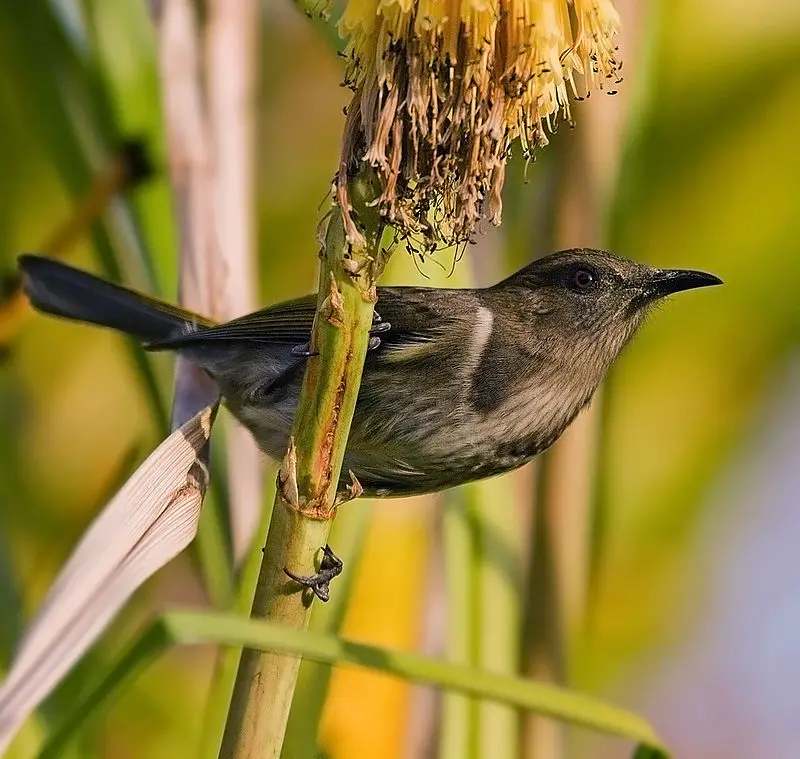
Honeyeaters are a unique and diverse family of birds, with species ranging in size from small to medium.
Found mainly in Australia and New Guinea, they can also be found as far east as Samoa and Tonga, or on islands such as Wallacea north or west of New Guinea.
Honeyeaters feed mainly on nectar but will consume insects if necessary for additional nutrition. They have specialized brush-like tongues that help them extract the nectar efficiently.
Their bright colours tend to make them stand out among other bird families making them easy to spot when out observing wildlife.
Scientific classification:
| Kingdom | Animalia |
| Phylum | Chordata |
| Class | Aves |
| Order | Passeriformes |
| Superfamily | Meliphagoidea |
| Family | Meliphagidae Vigors, 1825 |
Also Featured In: Most common birds in Australia, Guam Birds You Need to See
2. Australian Pelican
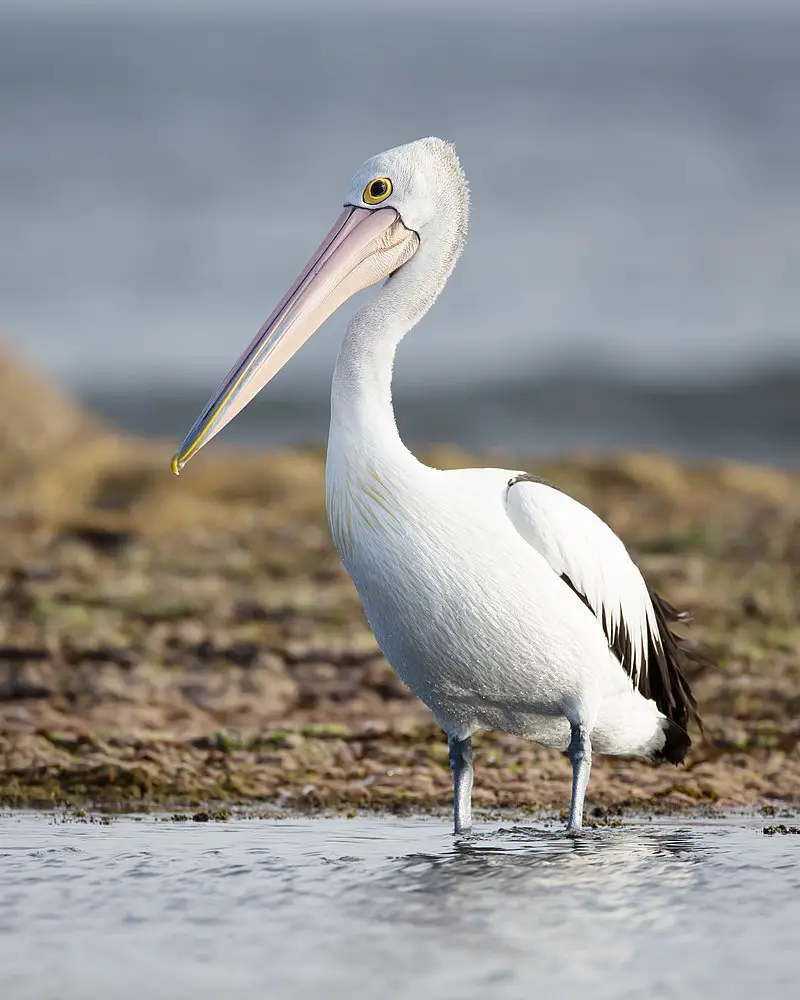
The Australian pelican is a majestic large waterbird with predominantly white plumage and black wings.
It has the longest bill of any living bird, which it uses to fish for its main source of food in both inland and coastal waters of Australia, New Guinea, Fiji, parts of Indonesia and as a vagrant in New Zealand.
They usually feed together by forming lines or circles around their prey before dipping down into the water at once.
In addition to fishing they also scavenge on other sources such as eggs from nesting seabirds or carrion.
Their unique appearance makes them an iconic species that can be easily recognised across many areas throughout Australasia making them popular amongst tourists who come to see them up close.
Scientific classification:
| Kingdom | Animalia |
| Phylum | Chordata |
| Class | Aves |
| Order | Pelecaniformes |
| Family | Pelecanidae |
| Genus | Pelecanus |
| Species | P. conspicillatus |
Also Featured In: Birds that Live in Kangaroo Island,
3. Cuckooshrike
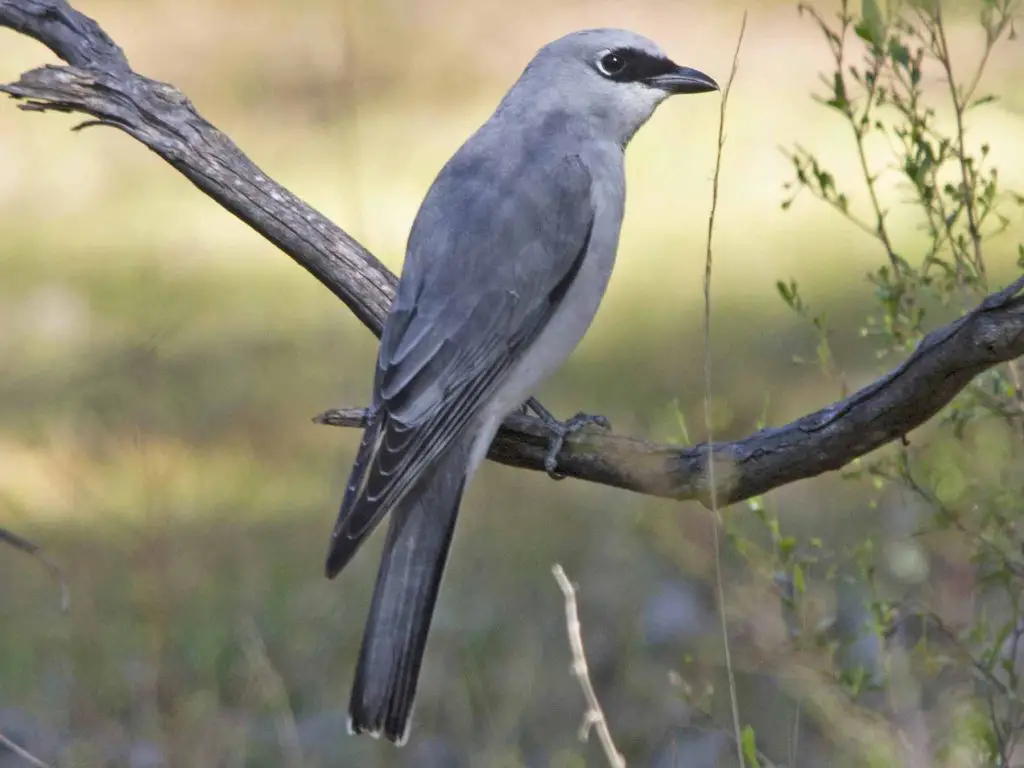
Cuckooshrikes are small to medium-sized passerine birds found mainly in the subtropical and tropical regions of Africa, Asia, and Australasia. They are usually arboreal, feeding on insects or fruit near foliage.
They have a stout bill with long wings and tails that can be used for balancing while perched on branches.
Cuckooshrike plumage is mostly grayish brown but some species may also feature black spots or stripes. The juvenile cuckooshrikes typically show more yellowish coloration than adults do.
These birds form monogamous pairs which often remain together year round defending their territory from other species as well as potential rivals within their own family group.
Scientific classification:
| Kingdom | Animalia |
| Phylum | Chordata |
| Class | Aves |
| Order | Passeriformes |
| Infraorder | Corvides |
| Family | Campephagidae Vigors, 1825 |
Also Featured In: Top Birds of Rwanda, Asian Birds
4. Metallic Pigeon
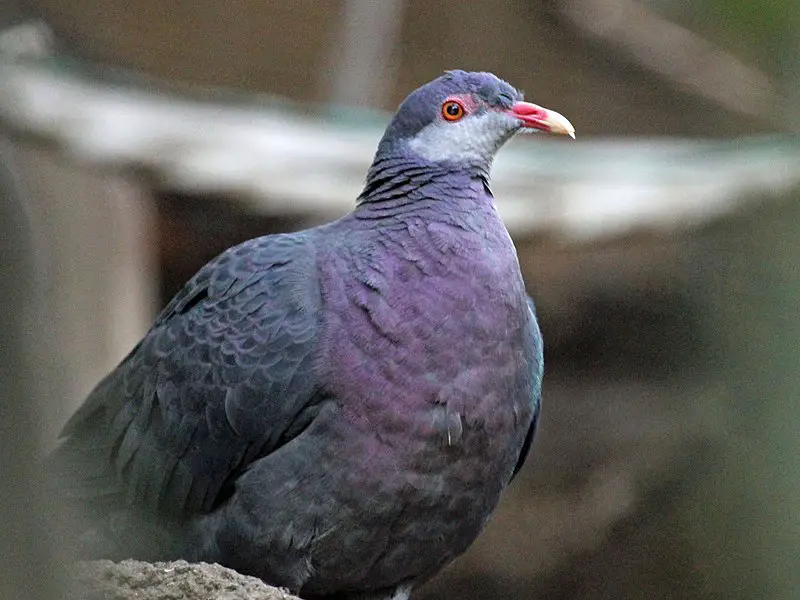
The Metallic Pigeon, or white-throated pigeon, is a medium-sized bird of the family Columbidae. Measuring up to 37 cm in length, it boasts an array of beautiful colors and features.
It has a dazzling iridescent purple and green crown, black wing and uppertail coverts with yellowish red eyes surrounded by red orbital skin around each eye.
Its beak is yellow while its chin and ears are covered with either grey or white feathers.
The underbelly shines brightly in chestnut or glossed purple shades for added beauty when flying about its natural habitat.
Lastly, this spectacular species sports purplish feet which act as perfect complements to their already colorful plumage.
Scientific classification:
| Kingdom | Animalia |
| Phylum | Chordata |
| Class | Aves |
| Order | Columbiformes |
| Family | Columbidae |
| Genus | Columba |
| Species | C. vitiensis |
Also Featured In: Timor-Leste birds, Common Birds of Lombok
5. Buff-Banded Rail
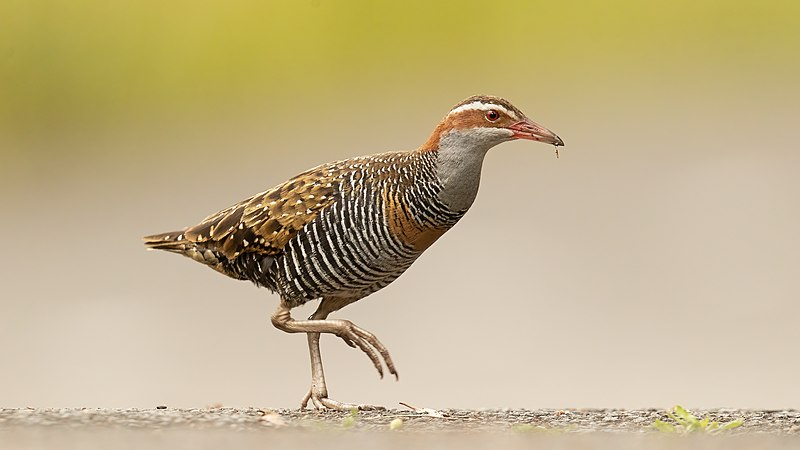
The Buff-banded Rail is a beautiful bird found across Australasia and the South West Pacific. It has distinctive black, brown, white and buff plumage which makes it easily recognizable.
Its long legs are adapted for wading in shallow water where it feeds on small fish, crustaceans, insects and vegetable matter.
This species is highly dispersive with some subspecies being found as far away as the Philippines (where they are known as Tikling) or New Zealand (known there as Moho-p).
With its adaptability to various habitats such as mangroves swamps, saltmarshes and farmlands; this species can be seen running around during low tide looking for food or hiding among vegetation when alarmed by potential danger.
Scientific classification:
| Kingdom | Animalia |
| Phylum | Chordata |
| Class | Aves |
| Order | Gruiformes |
| Family | Rallidae |
| Genus | Hypotaenidia |
| Species | H. philippensis |
Also Featured In: Water Birds Live around Us,
6. White-Browed Crake
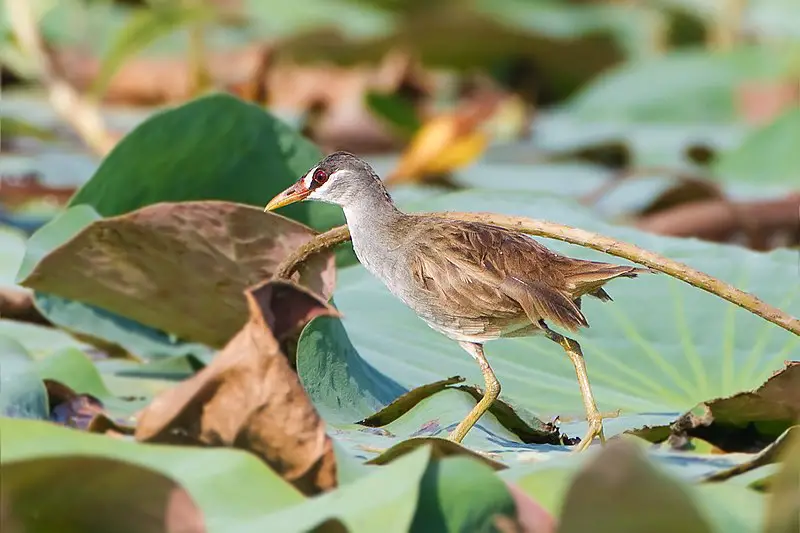
The White-browed Crake is an amazing bird found in many different parts of the world such as Australia, Brunei and even Japan.
It lives mostly in subtropical or tropical mangrove forests, where it can find plenty of food to survive on.
This species has a white head with brown eyes, combined with its slate grey back gives it a unique look that makes them stand out from other birds.
Its diet consists mainly of small invertebrates like insects and larvae but they also feed on fruits when available.
They are shy by nature so if you spot one be sure not to scare it away. Despite their rarity they have been known to breed successfully in captivity and thus have had some success at conservation efforts aimed at preserving this beautiful species.
Scientific classification:
| Kingdom | Animalia |
| Phylum | Chordata |
| Class | Aves |
| Order | Gruiformes |
| Family | Rallidae |
| Genus | Poliolimnas Sharpe, 1893 |
| Species | P. cinereus |
Also Featured In: Samar Island Birds You Should Know,
7. Shining Bronze Cuckoo
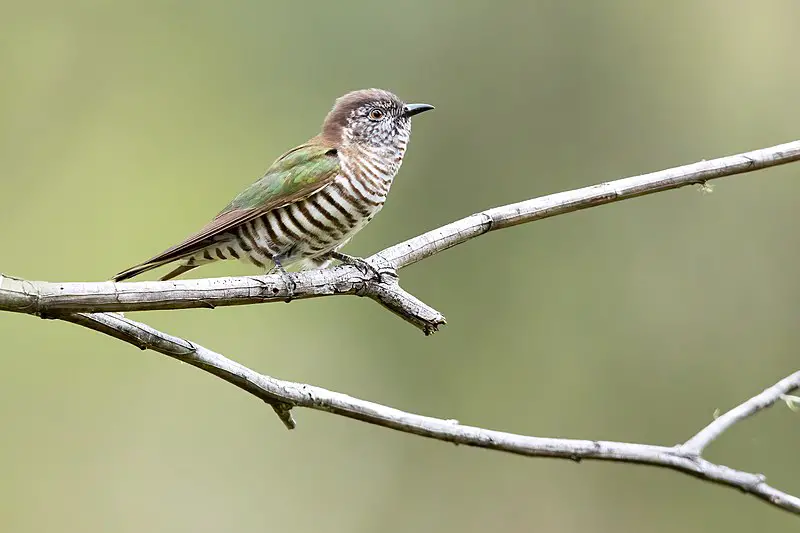
The Shining Bronze Cuckoo is a species of cuckoo found in many areas, including Australia, Indonesia and New Zealand.
It is quite small – only 13 to 18 cm long – but has beautiful plumage with glossy bronze-green on its upperparts and yellowish underparts.
This bird can be seen foraging in trees or shrubs for insects before returning back to its nest which it usually parasitises from other Gerygone species.
Its call consists of harsh croaks followed by an ascending whistle ‘kweeo’.
The diet primarily consists of beetles and caterpillars as well as fruits like figs depending on the season.
They are solitary birds that migrate over short distances during winter months while they largely remain sedentary throughout summer breeding periods when their numbers increase significantly due to nesting activity among tree branches near water sources such as rivers and swamps.
Scientific classification:
| Kingdom | Animalia |
| Phylum | Chordata |
| Class | Aves |
| Order | Cuculiformes |
| Family | Cuculidae |
| Genus | Chrysococcyx |
| Species | C. lucidus |
8. Streaked Fantail
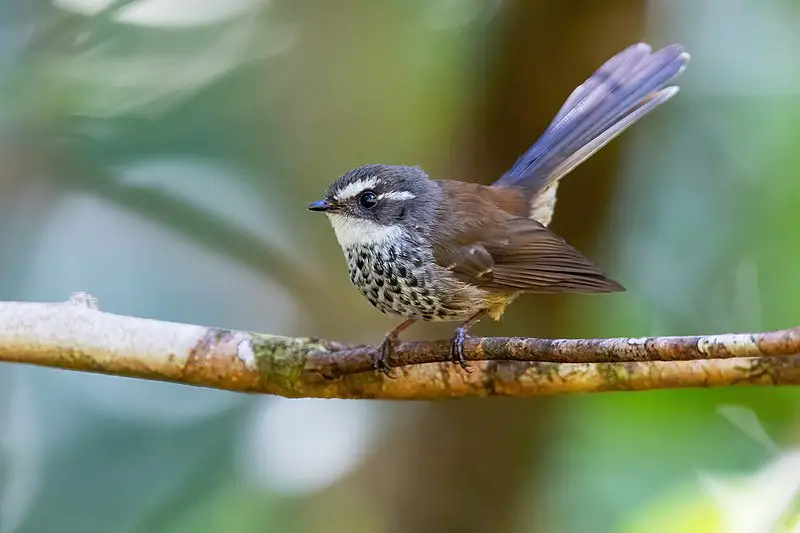
The Streaked Fantail is a species of bird belonging to the family Rhipiduridae. Found in Fiji, New Caledonia and Vanuatu, its natural habitat consists of lush subtropical or tropical lowland forests and moist montane forests.
According to IOC there are five recognised subspecies; Rhipidura verreauxi macgillivrayi (New Caledonia), Rhipidura v. melanorhyncha (Vanuatu) ,Rhipidura v mixta (Fiji’s Lau group); Rhipidura v ruficollis(Viti Levu & Kadavu islands) & Rhopdira V spilodera (eastern Fiji).
This small brown-grey coloured fantail has white streaks across its wings which give it a distinctive look when flying amongst other birds in the region.
It also possesses unique rummaging movements whilst hunting for food on the ground with short hops that make it stand out from other similar looking species.’
Scientific classification:
| Kingdom | Animalia |
| Phylum | Chordata |
| Class | Aves |
| Order | Passeriformes |
| Family | Rhipiduridae |
| Genus | Rhipidura |
| Species | R. verreauxi |
Also Featured In: Fiji birds,
9. White-Rumped Swiftlet
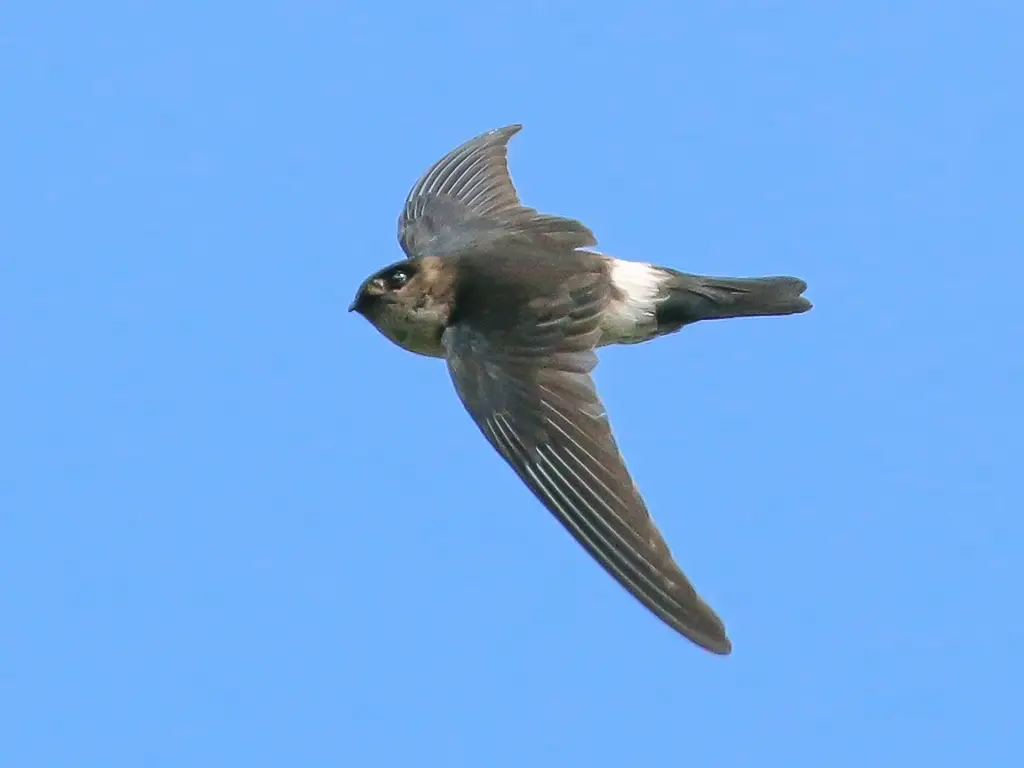
The White-rumped Swiftlet is a species of swift found in the Pacific Islands, including American Samoa, Fiji, New Caledonia and Vanuatu.
It has also been seen in Papua New Guinea and Solomon Islands.
This bird inhabits subtropical or tropical moist lowland forests where it feeds on flying insects such as termites, beetles and flies.
Its main predators are hawks while other threats include deforestation due to logging activities which may reduce its habitat size significantly.
The Australian population was considered separate species (Aerodramus terraereginae) until recently when researchers recognized them as one single species again.
Conservation efforts for this beautiful bird must be done if we want future generations to witness its gracefulness taking flight across our skies.
Scientific classification:
| Kingdom | Animalia |
| Phylum | Chordata |
| Class | Aves |
| Order | Apodiformes |
| Family | Apodidae |
| Genus | Aerodramus |
| Species | A. spodiopygius |
10. Melanesian Flycatcher
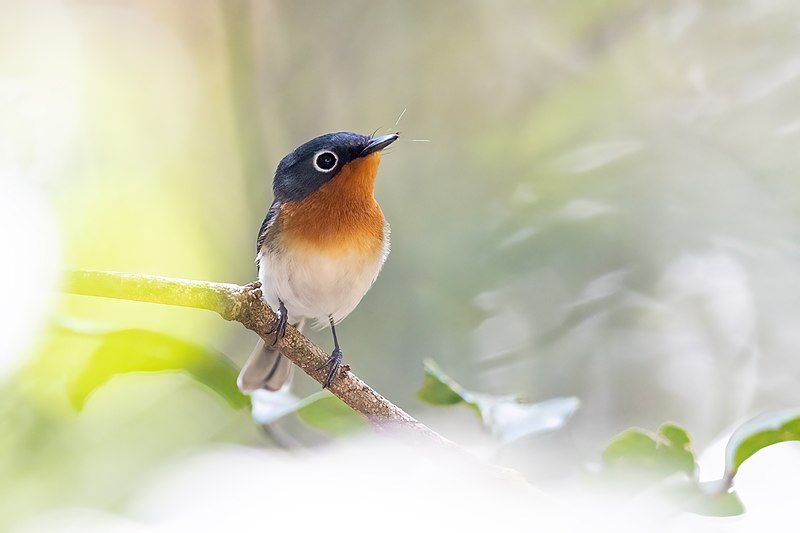
The Melanesian flycatcher is a species of bird belonging to the Monarchidae family and natively found on islands in Melanesia.
It’s closely related to the Vanikoro flycatcher, being known by other names such as broad-billed flycatcher, Caledonian Myiagra Flycatcher or New Caledonian Broadbill.
This small bird has a brown head with white spots near its eyes and an olive green body with yellow tinges along its wings.
Its bill is slightly curved upwards forming a hook shape at the end making it easier for them to catch insects like flies which they usually feed on while perching atop branches during flightless periods.
They are very active birds often seen flying around trees looking for food or nesting materials in order to build their nests which can be made from twigs, grasses among others things depending upon availability.
Scientific classification:
| Kingdom | Animalia |
| Phylum | Chordata |
| Class | Aves |
| Order | Passeriformes |
| Family | Monarchidae |
| Genus | Myiagra |
| Species | M. caledonica |
Also Featured In: Solomon Islands birds,
11. Long-Tailed Triller
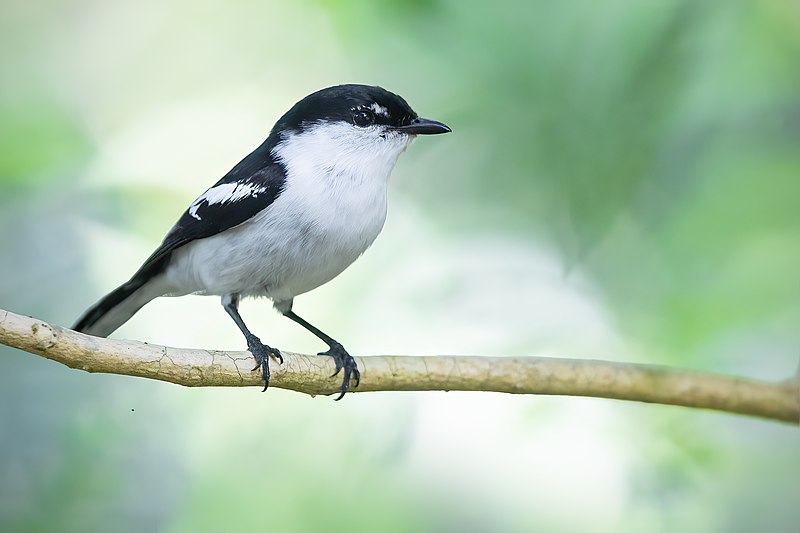
The Long-tailed triller is a species of bird found in New Caledonia, Solomon Islands and Vanuatu.
It belongs to the family Campephagidae and its natural habitats are subtropical or tropical moist lowland forests as well as montane forests.
Sadly, the Norfolk Island subspecies of this bird has become extinct due to human activities such as deforestation.
The long-tailed triller is largely olive green with yellowish eyebrows and wings that have white patches on them when open.
Its tail itself can be up to 20 cm (7 inches) in length which gives it its name.
This beautiful creature loves feeding on insects while perched among foliage or flying through trees searching for food from branches.
Scientific classification:
| Kingdom | Animalia |
| Phylum | Chordata |
| Class | Aves |
| Order | Passeriformes |
| Family | Campephagidae |
| Genus | Lalage |
| Species | L. leucopyga |
12. Fan-Tailed Gerygone
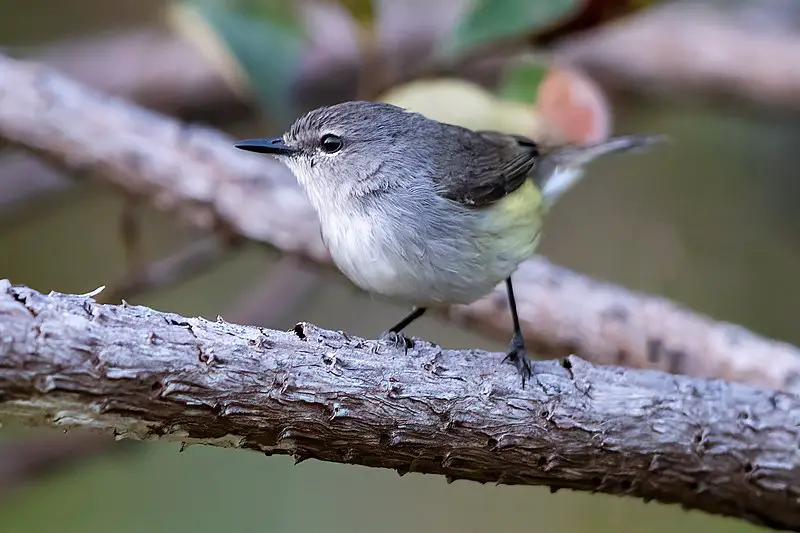
The fan-tailed gerygone is a species of bird belonging to the family Acanthizidae. It resides in New Caledonia and Vanuatu, although its close relative, the Rennell gerygone (G.
citrina) was recently discovered living on the Solomon Islands too. Fan-tailed gerygones have greyish brown uppersides with light yellow undersides, buffy streaks along their sides and white spots on their wings.
Their tail feathers are fanned out at an angle which helps it fly swiftly through dense foliage when foraging or avoiding predators such as cats or rats that may be present in those areas. These birds mostly feed on insects but will also consume fruits occasionally.
They build circular nests from twigs and dry leaves placed low down among grasses where they lay up to three eggs per clutch; both parents take turns incubating them until hatching occurs after around two weeks.
Scientific classification:
| Kingdom | Animalia |
| Phylum | Chordata |
| Class | Aves |
| Order | Passeriformes |
| Family | Acanthizidae |
| Genus | Gerygone |
| Species | G. flavolateralis |
Also Featured In: Vanuatu birds,
13. Grey-Eared Honeyeater
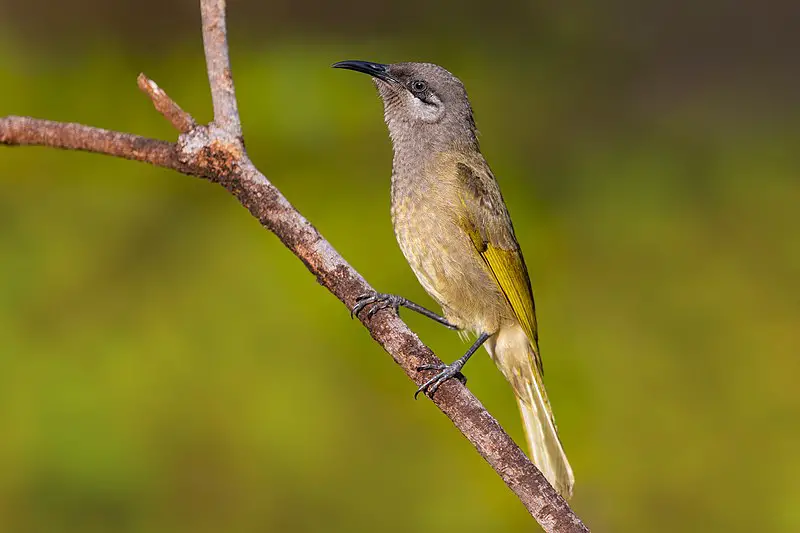
The Grey-eared honeyeater is a passerine bird belonging to the family of Honeyeaters found in Vanuatu and New Caledonia. It measures between 13-17 cm long, with its distinctive grey ear coverts being its main identifying feature.
This species has dark brown upperparts and wings with yellowish underparts, along with white spots on their head and neck feathers.
During breeding season they can often be seen foraging in small flocks around eucalyptus woodlands or other flower rich areas where they feed mainly on nectar from flowering plants as well as insects and fruit.
They are active birds that rarely sit still making them difficult to observe without practice but an experienced birder will be rewarded by excellent views of these hardy little members of the avian world.
Scientific classification:
| Kingdom | Animalia |
| Phylum | Chordata |
| Class | Aves |
| Order | Passeriformes |
| Family | Meliphagidae |
| Genus | Lichmera |
| Species | L. incana |
14. Red-Bellied Fruit Dove
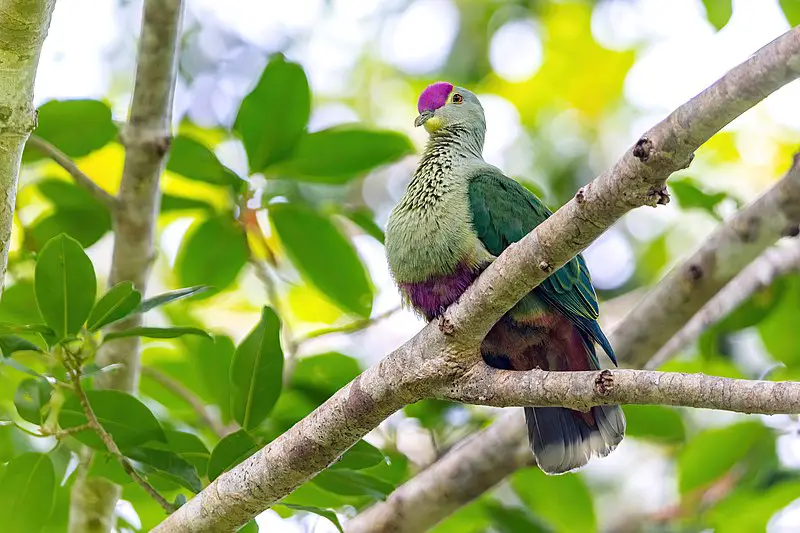
The Red-bellied Fruit Dove is an amazing species of bird found in lowland forests of New Caledonia, the Santa Cruz Islands and Vanuatu. It boasts a beautiful green plumage with purple-red patches on its crown and central belly.
Both genders are very similar to each other, making it difficult to tell them apart at first glance. The dove feeds mainly off fruits located high up in trees or bushes but will also feed on fallen fruit from time to time.
They have been known as gentle creatures who live peacefully among their peers; however they can become aggressive during mating season when food sources are scarce.
All things considered, the Red-bellied Fruit Dove has proven itself to be one of nature’s most colorful birds that deserves our respect for its beauty.
Scientific classification:
| Kingdom | Animalia |
| Phylum | Chordata |
| Class | Aves |
| Order | Columbiformes |
| Family | Columbidae |
| Genus | Ptilinopus |
| Species | P. greyi |
15. White-Faced Heron
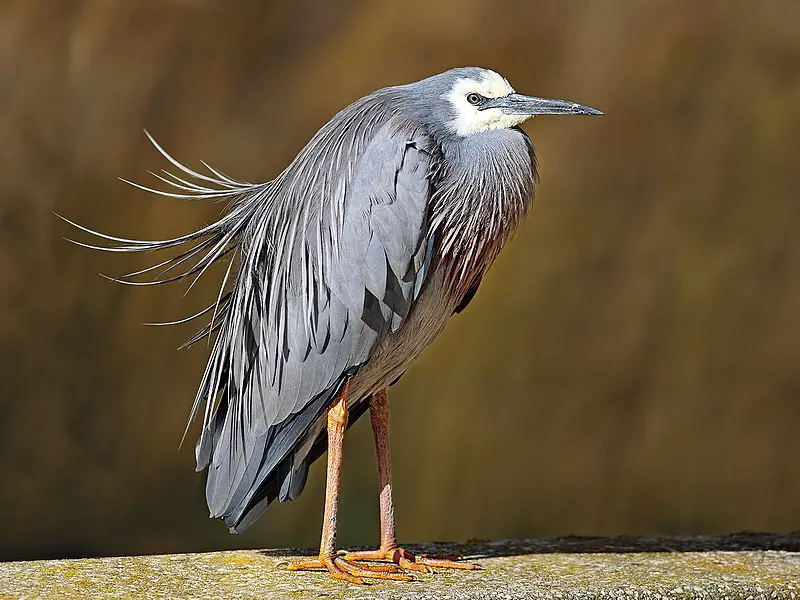
The White-faced Heron is a common sight throughout much of Australasia. With its pale, bluish grey feathers and yellow legs this bird stands out in the crowd.
It can be found on New Guinea, Torres Strait Islands and Indonesia as well as Australia and New Zealand but tends to avoid dry areas. This medium sized heron has one distinct feature – a white face.
Its diet consists mainly of small fish, lizards, frogs insects and crustaceans which it hunts for by wading into shallow water or searching through grasses near wetlands.
In flight they appear graceful with their long neck tucked back against their body giving them an elegant silhouette against the sky.
Their behaviour shows intelligence when finding food sources or evading predators making them interesting creatures to observe in nature.
Scientific classification:
| Kingdom | Animalia |
| Phylum | Chordata |
| Class | Aves |
| Order | Pelecaniformes |
| Family | Ardeidae |
| Genus | Egretta |
| Species | E. novaehollandiae |
Also Featured In: Christmas Island Birds, Birds that Live around Brisbane
16. White-Necked Petrel
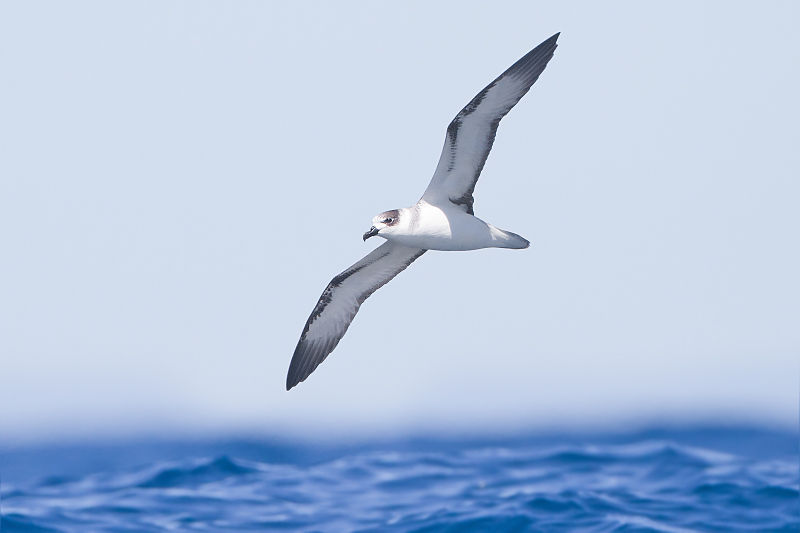
The White-necked petrel is a species of seabird belonging to the Procellariidae family. It has a large range, occurring throughout most parts of the Pacific Ocean during its non-breeding season but only breeding on Macauley Island in New Zealand’s Kermadec Islands and also Norfolk Island and Phillip Island in Australia.
This bird was once known to breed on Raoul I too, however this population no longer exists.
The White-necked Petrel can be identified by its distinctive white neck which contrasts with otherwise dark plumage featuring light grey wing tips.
Its diet consists mainly of squid and fish taken from both surface waters and deeper oceanic areas close to where it breeds.
Scientific classification:
| Kingdom | Animalia |
| Phylum | Chordata |
| Class | Aves |
| Order | Procellariiformes |
| Family | Procellariidae |
| Genus | Pterodroma |
| Species | P. cervicalis |
Also Featured In: Cook Islands birds,
17. Black-Winged Petrel
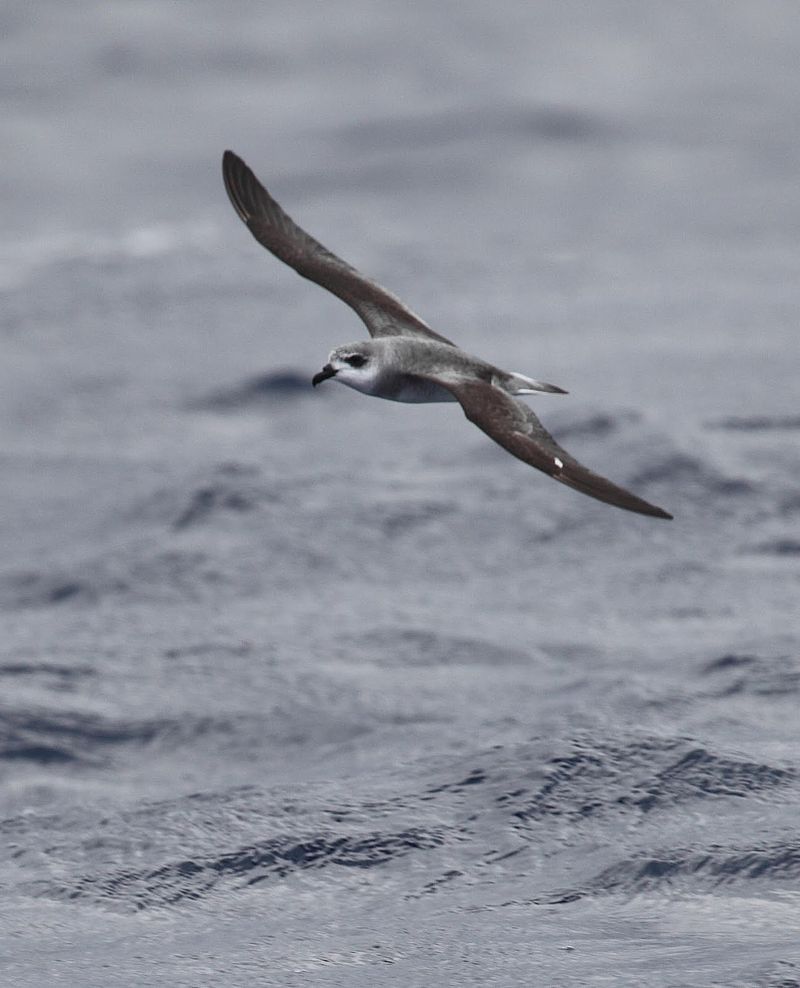
The Black-winged Petrel is a species of seabird that has an impressive wingspan, averaging 67 cm. It can be found in tropical and subtropical regions of the East Pacific Ocean where it breeds on islands.
During migration, it spends its time out at sea before returning to breed again. They are small birds with long narrow wings and average 29cm in length.
Its plumage is mainly dark greyish brown above while white below with black markings on the wingtips which gives them their distinct name “black-winged petrel”.
These beautiful birds live off fish they find close to ocean surfaces but also eat squid as well as other crustaceans too.
Scientific classification:
| Kingdom | Animalia |
| Phylum | Chordata |
| Class | Aves |
| Order | Procellariiformes |
| Family | Procellariidae |
| Genus | Pterodroma |
| Species | P. nigripennis |
Also Featured In: Birds You’ll Find in the Marshall Islands, Easter Island Birds You Should Know
18. Silver Gull
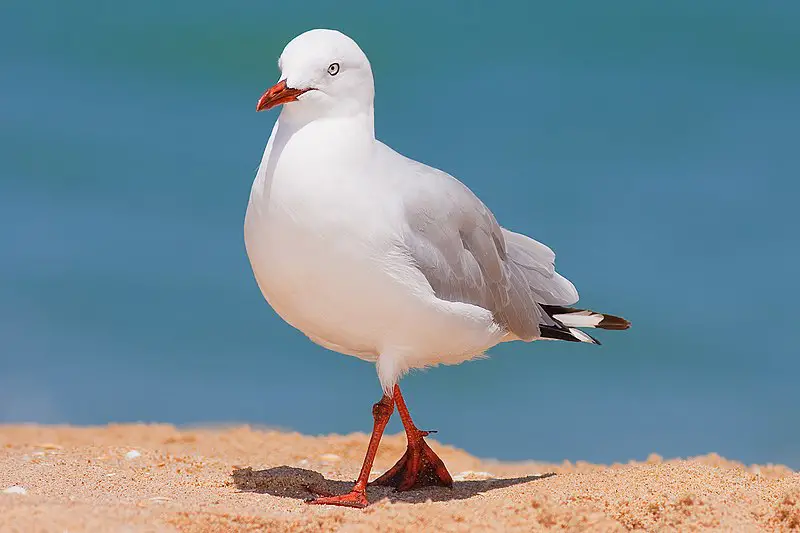
The Silver Gull is a common sight in Australia, especially along the coastlines. It’s smaller than the Pacific Gull and has silver-grey wings with white head and underparts.
Its scientific name is Chroicocephalus novaehollandiae, but it shouldn’t be confused with the Herring Gull which is also called “Silver Gull” in many other languages (Larus argentatus).
During summer months these birds can often be seen around fishing boats scavenging for discarded food or flying low over city parks looking for handouts from humans.
They are highly adaptable to their environment making them quite successful at coexisting near human populations.
These Australian seabirds have been known to live up to 25 years old.
Scientific classification:
| Kingdom | Animalia |
| Phylum | Chordata |
| Class | Aves |
| Order | Charadriiformes |
| Family | Laridae |
| Genus | Chroicocephalus |
| Species | C. novaehollandiae |
Also Featured In: Gulls Species, Silver Birds You Should Know
19. Nankeen Night Heron
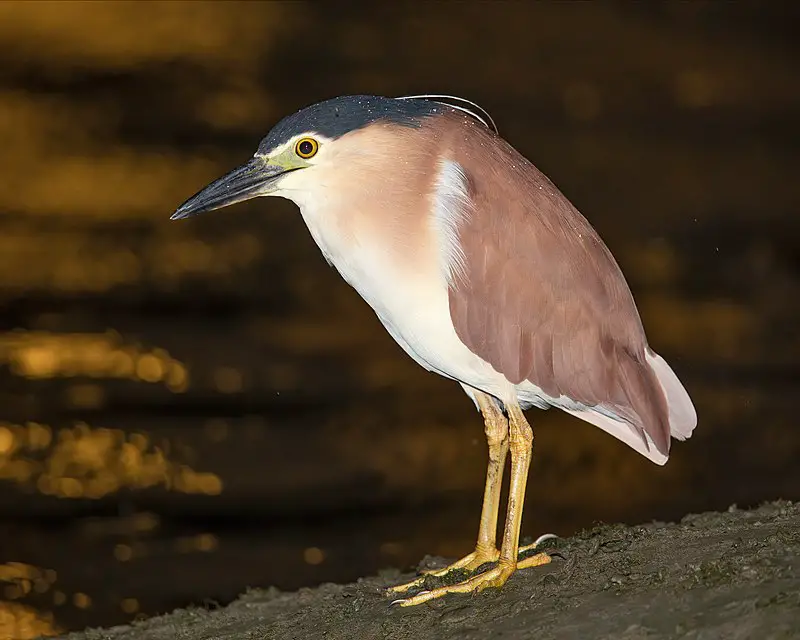
The Nankeen night heron is a beautiful bird with its distinct reddish-brown colour. It can be found in an impressive range of habitats, including forests, meadows, shores and swamps.
Primarily nocturnal by nature, these birds are most active during the dark hours of the day.
Measuring between 55 to 65 cm long they have broad wings which help them soar through the air gracefully at great speeds when hunting for food or migrating across continents.
Their diet primarily consists of small fish and other aquatic creatures that live in lakes or rivers near their homes.
For many people living near water sources like ponds or streams this species has become a familiar sight as it often comes out to feed on insects at dusk.
Scientific classification:
| Kingdom | Animalia |
| Phylum | Chordata |
| Class | Aves |
| Order | Pelecaniformes |
| Family | Ardeidae |
| Genus | Nycticorax |
| Species | N. caledonicus |
Also Featured In: Herons Species, Birds that Live around Victoria
20. Sacred Kingfisher
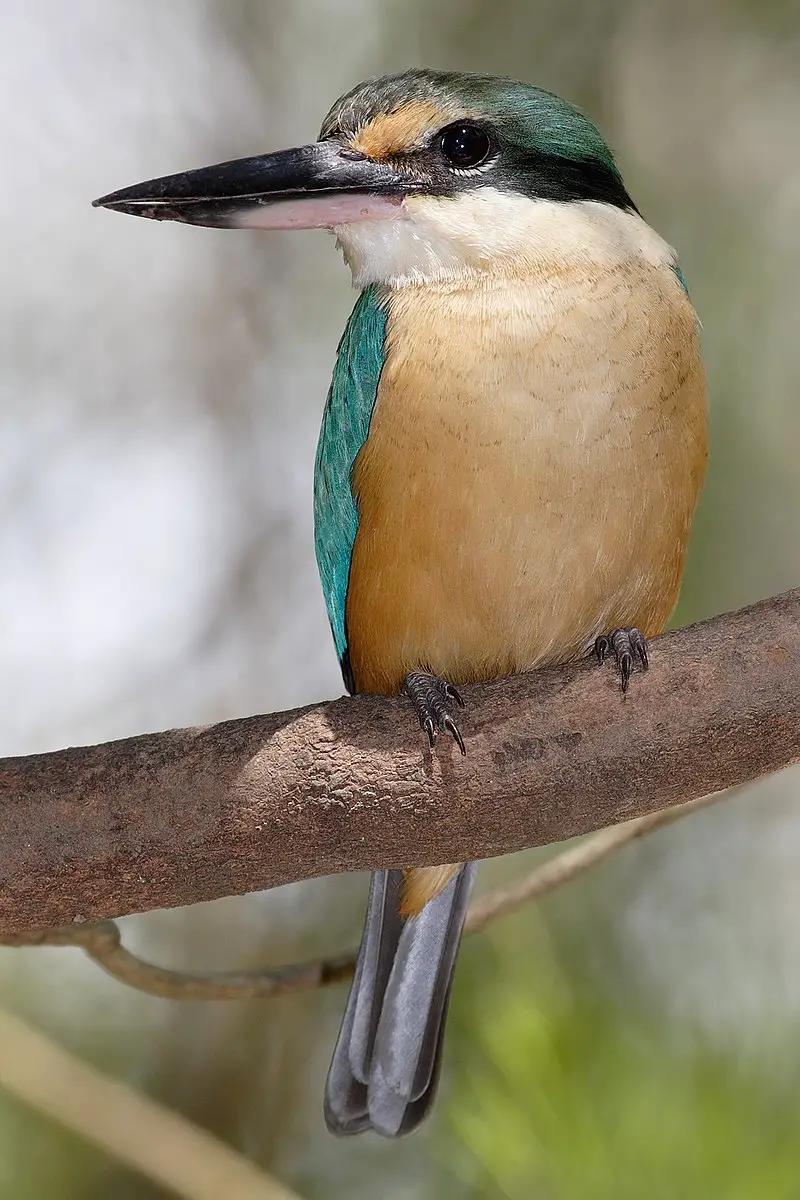
The Sacred Kingfisher is a medium-sized bird found throughout Australia, New Zealand and the western Pacific. It inhabits mangroves, woodlands, forests and river valleys.
Its binomial name Halcyon sanctus was introduced by Nicholas Aylward Vigors and Thomas Horsfield in 1827 when they described an Australian specimen of this species.
The kingfisher has bright blue feathers on its back with striking orange or red underparts depending on their geographical location.
They feed mainly off fish but will also take crustaceans as well as other small aquatic prey like insects.
When breeding season arises these magnificent birds build elaborate nests out of mud pellets inside hollows near water sources making them one of the most unique avian creatures around.
Scientific classification:
| Kingdom | Animalia |
| Phylum | Chordata |
| Class | Aves |
| Order | Coraciiformes |
| Family | Alcedinidae |
| Subfamily | Halcyoninae |
| Genus | Todiramphus |
| Species | T. sanctus |
Also Featured In: Kingfishers Species, Queensland Birds You Should Know
21. Cloven-Feathered Dove
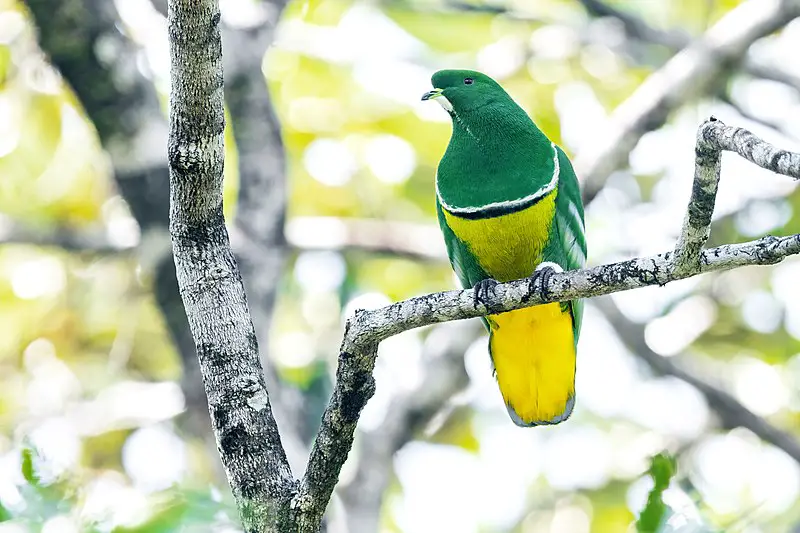
The Cloven-feathered Dove is a species of bird found only in New Caledonia, where it inhabits forests and Melaleuca savannas up to an altitude of 1,000 metres.
Its unique feathers are split into two distinct parts which give the bird its name. Unfortunately this beautiful species has been listed as near threatened by the IUCN due to deforestation and habitat loss caused by human activity.
It also faces threats from invasive predators such as cats, rats and mongooses that have been introduced to the island nation over time.
Conservation efforts must be taken if we want this fascinating creature to continue surviving on our planet for generations more.
Scientific classification:
| Kingdom | Animalia |
| Phylum | Chordata |
| Class | Aves |
| Order | Columbiformes |
| Family | Columbidae |
| Genus | Drepanoptila Bonaparte, 1855 |
| Species | D. holosericea |
Also Featured In: Pigeons Species,
22. Goliath Imperial Pigeon
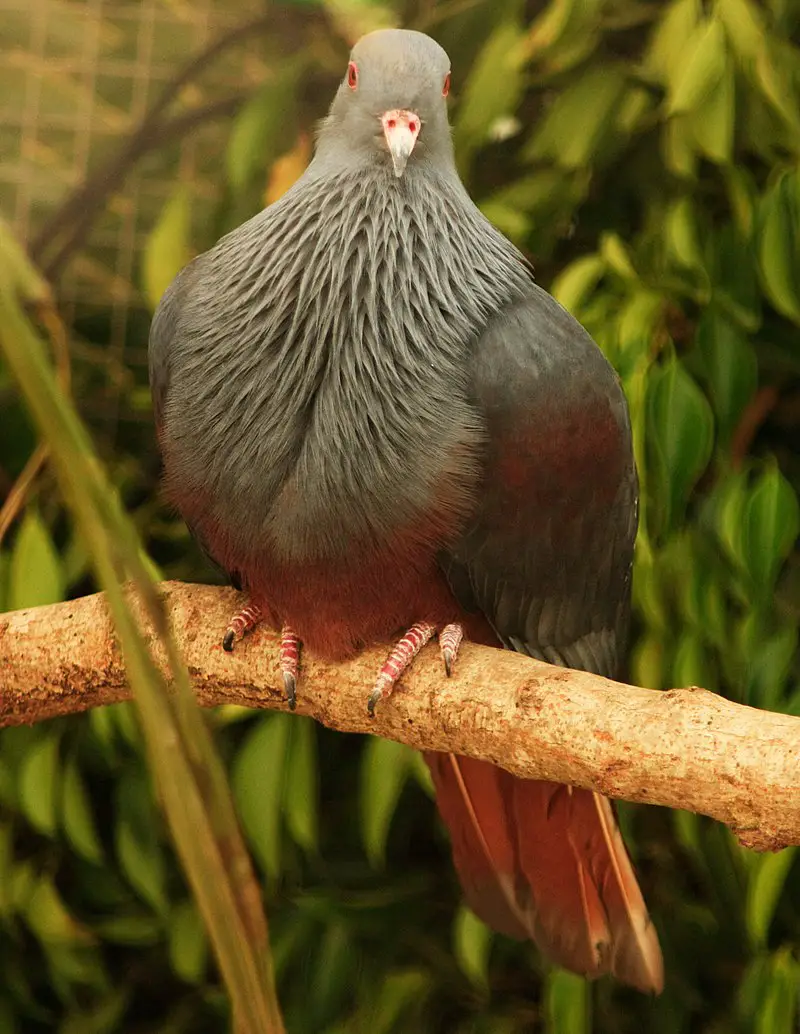
The Goliath Imperial Pigeon is an impressive bird, endemic to New Caledonia. This species belongs to the Columbidae family and has a near-threatened status according to the IUCN.
Its natural habitat consists of humid forests where it can find its food sources such as fruits and insects.
It was originally described as Carpophaga (Phænorhina) goliath by researchers in 1854 due to its large size compared with other pigeons from this genus.
With an overall grey coloring, males are known for their dark green breast feathers while females have more brownish tones on theirs.
For both genders, wings feature white patches which stand out against the background coloration of these birds when they take flight or land back into trees after feeding sessions at ground level during mornings or late evenings.
Scientific classification:
| Kingdom | Animalia |
| Phylum | Chordata |
| Class | Aves |
| Order | Columbiformes |
| Family | Columbidae |
| Genus | Ducula |
| Species | D. goliath |
23. Fairy Tern
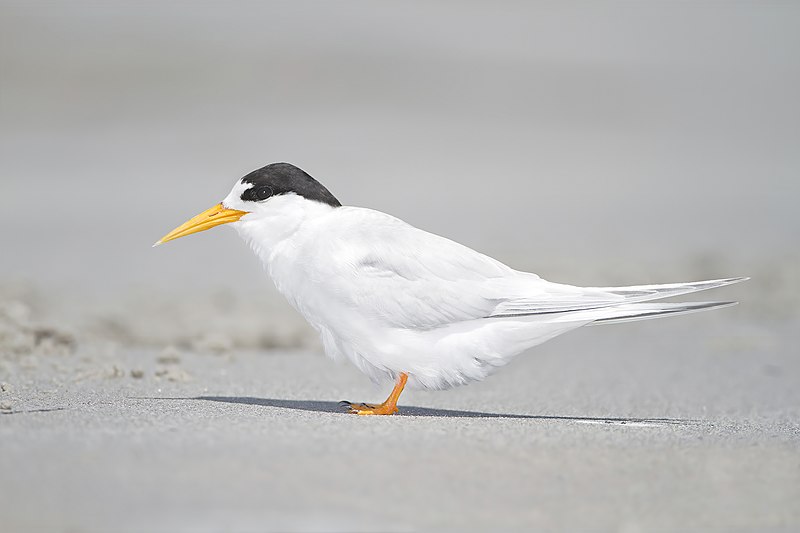
The Fairy Tern is a small tern native to the southwestern Pacific and listed as “Vulnerable” by the IUCN, with its New Zealand subspecies declared critically endangered.
The bird has a white body, light bluish-grey wings, and a black patch which does not extend further than their eye but not quite as far as their bill.
During mating season they develop an attractive breeding plumage of yellow breast feathers and grey legs.
They are able to fly long distances in search for food or migrate during winter months when available resources may be scarce in certain areas.
Despite this amazing ability to adapt however, human activities such as coastal development have caused severe population decline making them highly vulnerable species at risk of extinction without conservation efforts soon being implemented.
Scientific classification:
| Kingdom | Animalia |
| Phylum | Chordata |
| Class | Aves |
| Order | Charadriiformes |
| Family | Laridae |
| Genus | Sternula |
| Species | S. nereis |
Also Featured In: Terns Species, South Australian Birds
24. Red-Throated Parrotfinch
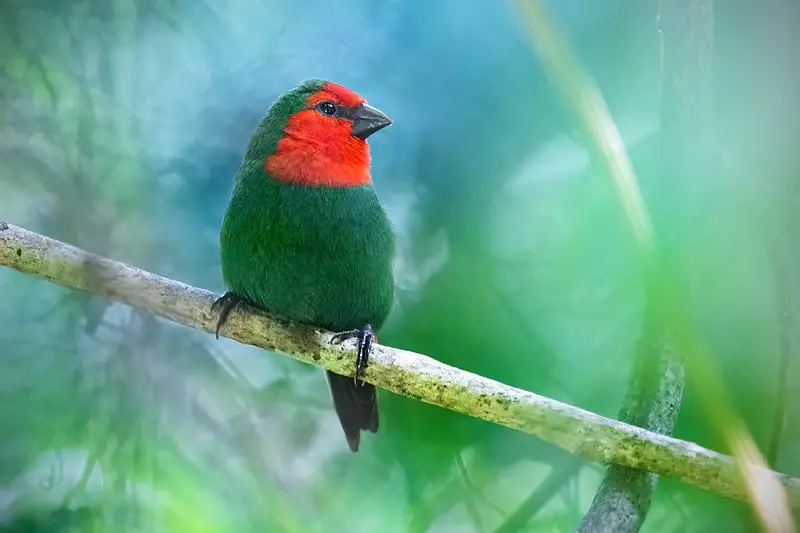
The Red-throated parrotfinch bird is a small species of finch that is native to New Caledonia. This bird’s estimated global range is between 20,000 to 50,000 km2, which includes both subtropical and tropical moist lowland forest areas, as well as shrublands.
Despite the loss of natural habitats, the species is classified as least concern by the IUCN. Their name comes from their striking red throat feathers, which contrast against their green and yellow plumage.
These birds are known for their distinctive chirping sounds and are often kept as pets due to their vibrant colors.
The Red-throated parrotfinch is a unique and colorful addition to the avian life of New Caledonia.
Scientific classification:
| Kingdom | Animalia |
| Phylum | Chordata |
| Class | Aves |
| Order | Passeriformes |
| Family | Estrildidae |
| Genus | Erythrura |
| Species | E. psittacea |
Also Featured In: Aviary Birds You Should Know,
25. Eastern Grass Owl
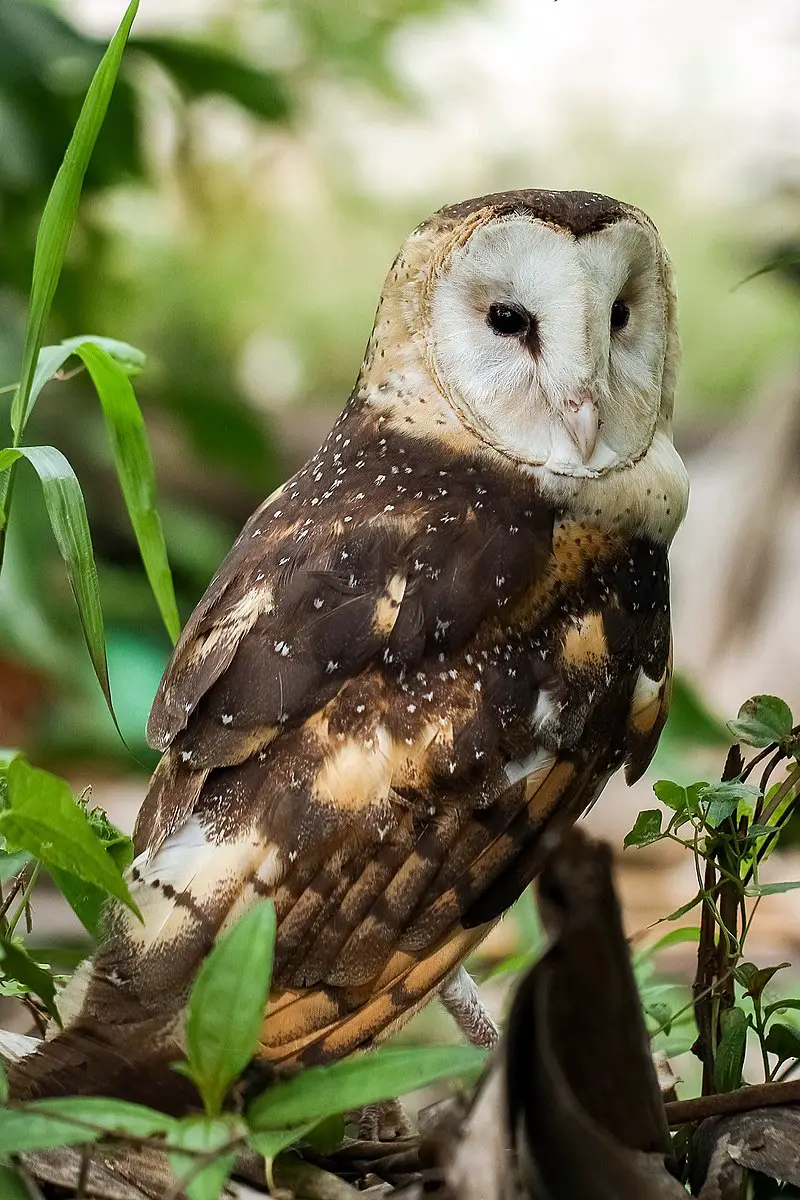
The Eastern grass owl is a medium-sized owl found in countries such as China and Australia. They mainly feed on small rodents.
Some experts believe that this owl is the same species as the African grass owl, while others view it as a distinct species.
It belongs to the Tytonidae family and is also known as the Chinese grass owl or Australian grass owl. The owl is similar in size to other medium-sized owls.
Overall, the Eastern grass owl is a fascinating bird species that continues to be researched and studied by ornithologists and other experts.
Scientific classification:
| Kingdom | Animalia |
| Phylum | Chordata |
| Class | Aves |
| Order | Strigiformes |
| Family | Tytonidae |
| Genus | Tyto |
| Species | T. longimembris |
Also Featured In: Birds that Charles Darwin Studied, Most Common Taiwan Birds
26. Royal Spoonbill
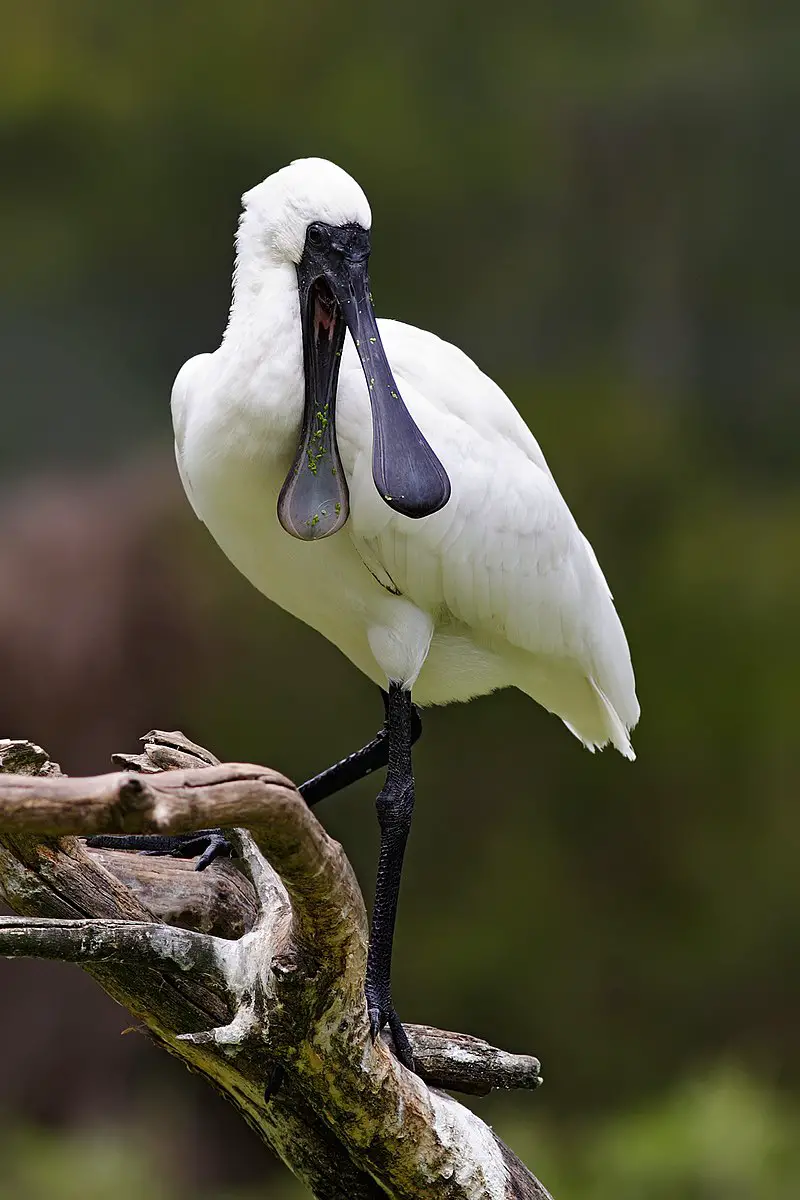
The royal spoonbill is a large bird found in wetlands across Australia, New Zealand, Papua New Guinea, and the Solomon Islands. Known for its distinctive spoon-shaped bill, it feeds on small fish, crustaceans, and insects in intertidal flats and shallow waters.
This black-billed spoonbill is also sometimes sighted as a vagrant in New Caledonia. In New Zealand, it is called kōtuku ngutupapa by the Māori people.
The royal spoonbill is often seen wading through water with its head bobbing back and forth as it searches for prey.
Its striking all-white plumage and bright yellow crest make it a popular sight for birdwatchers and nature enthusiasts.
The royal spoonbill is a fascinating bird, perfectly adapted to its aquatic habitat and always a delight to see in the wild.
Scientific classification:
| Kingdom | Animalia |
| Phylum | Chordata |
| Class | Aves |
| Order | Pelecaniformes |
| Family | Threskiornithidae |
| Genus | Platalea |
| Species | P. regia |
Also Featured In: Birds that Live Near Adelaide, Sydney Birds You Need to See
27. Rufous Whistler
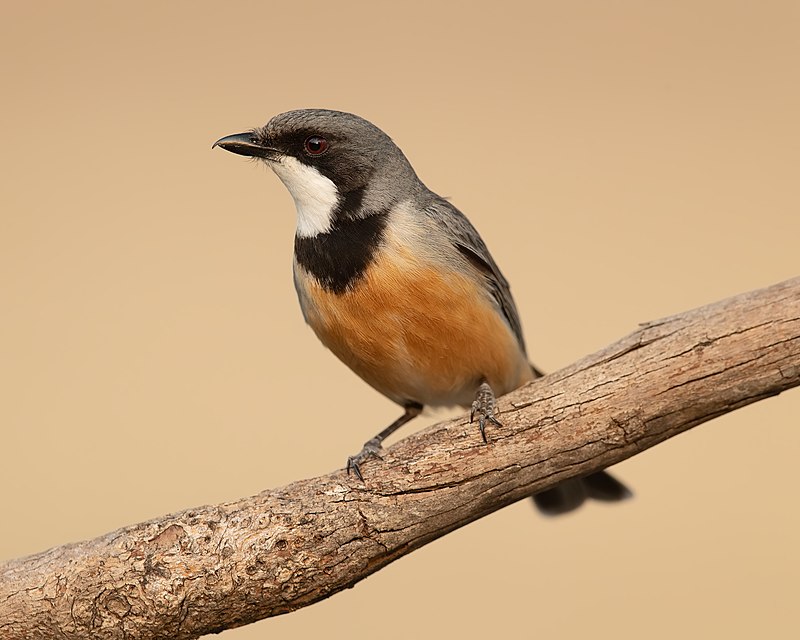
The Rufous whistler has reddish-brown and grey feathers that are not particularly flashy. However, it more than makes up for its subdued appearance with its impressive singing ability.
This bird species can be found in New Caledonia and Australia, where it is known for its variety of melodies and calls.
The Rufous whistler is a member of the Pachycephalidae family, which is known for its many musical calls.
It was initially classified in the Sylvia genus by the English ornithologist J.
Overall, the Rufous whistler is not the most visually striking bird, but its beautiful songs and calls make it a favorite among birdwatchers and nature enthusiasts.
Scientific classification:
| Kingdom | Animalia |
| Phylum | Chordata |
| Class | Aves |
| Order | Passeriformes |
| Family | Pachycephalidae |
| Genus | Pachycephala |
| Species | P. rufiventris |
Also Featured In: Most Common Western Australia Birds, Birds that You’ll find in Perth
28. Australasian Bittern
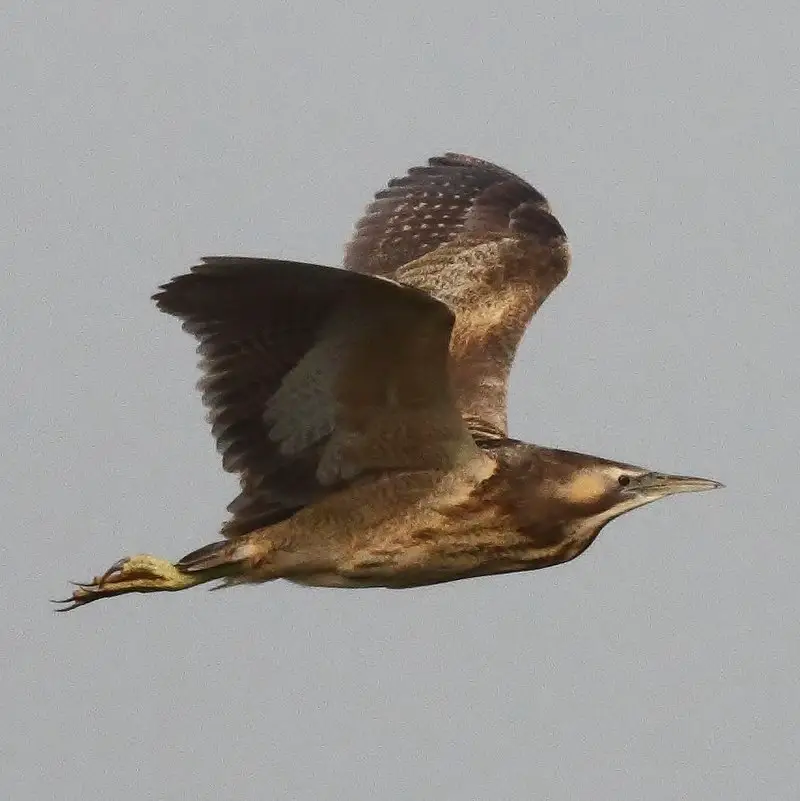
The Australasian bittern, also known as the brown bittern or matuku hūrepo, is a large bird from the heron family Ardeidae. It has a distinct booming call and is more often heard than seen due to its secretive nature.
This bird is endangered in both Australia and New Zealand, making its conservation a vital concern.
With a unique appearance and behavior, the Australasian bittern is a fascinating species to study, but its dwindling population highlights the importance of conservation efforts to protect and preserve this species for future generations.
Its nickname, the “bunyip bird,” adds to its mythical and mysterious allure among bird enthusiasts.
Scientific classification:
| Kingdom | Animalia |
| Phylum | Chordata |
| Class | Aves |
| Order | Pelecaniformes |
| Family | Ardeidae |
| Genus | Botaurus |
| Species | B. poiciloptilus |
Also Featured In: Birds of Tasmania, Endangered Birds of New Zealand
29. Swamp Harrier
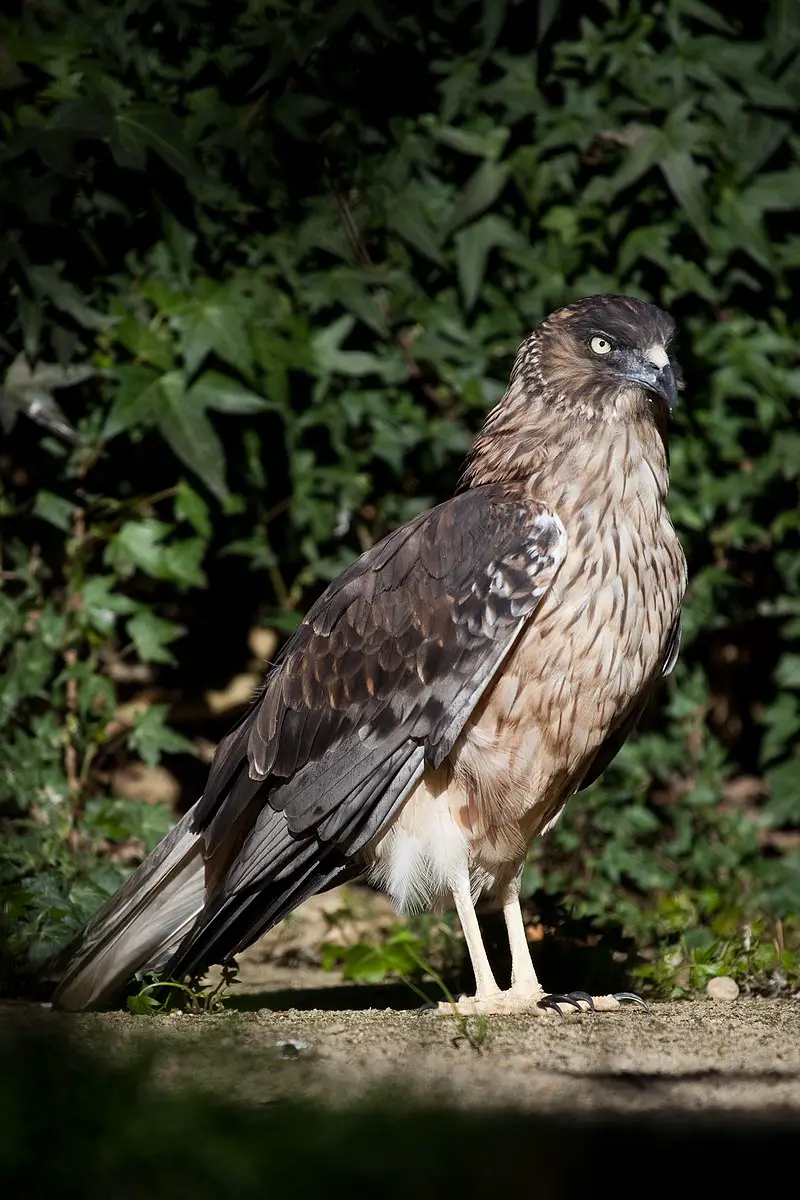
The swamp harrier bird is a predator found across Australasia. Boasting a sleek form with a wingspan of up to 1.2 meters, the bird is also known as the Australasian marsh harrier or swamp-hawk.
In New Zealand, it is called the Kāhu or harrier hawk. The bird arrived in New Zealand less than 700 years ago, replacing the now-extinct larger endemic species.
The swamp harrier bird is an adaptable hunter with a varied diet and a knack for catching prey on the ground.
Its conservation status varies across its range, but as a top predator, it plays an important role in the ecosystem.
Scientific classification:
| Kingdom | Animalia |
| Phylum | Chordata |
| Class | Aves |
| Order | Accipitriformes |
| Family | Accipitridae |
| Genus | Circus Lacépède, 1799 |
| Species | C. approximans |
30. Beach Stone-Curlew
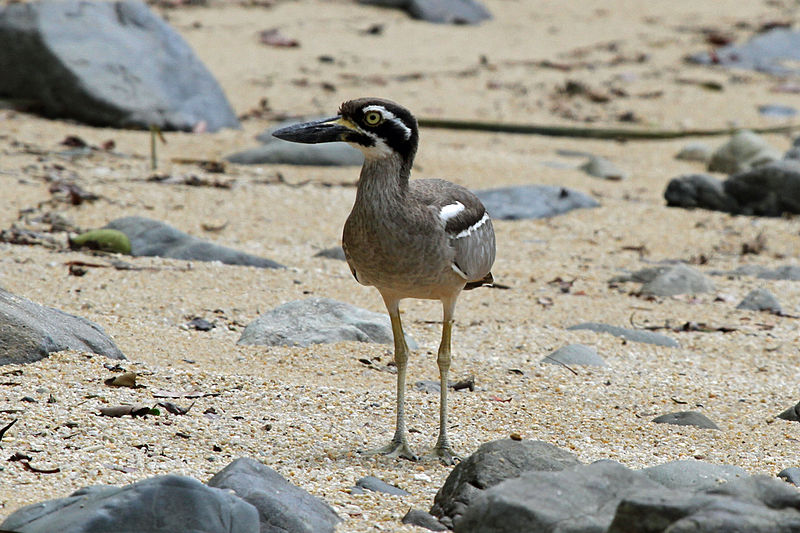
The beach stone-curlew is a large ground-dwelling bird found in Australasia and Southeast Asia. Weighing up to 1 kg, it is one of the largest shorebirds in the world.
With a distinct appearance, this bird has a sturdy body and long legs, making it well-suited for hunting on the beach.
The male species typically weighs a mean of 1,032 g, while the female species weighs around 1,000 g.
Its size and weight make it the heaviest living member of the Charadriiformes family outside of gulls.
The beach stone-curlew is also known as the beach thick-knee, owing to the distinctive thick joint on its leg.
This bird has become vulnerable to habitat loss and hunting, and conservation efforts have been initiated to protect the species.
Scientific classification:
| Kingdom | Animalia |
| Phylum | Chordata |
| Class | Aves |
| Order | Charadriiformes |
| Family | Burhinidae |
| Genus | Esacus |
| Species | E. magnirostris |
Also Featured In: Birds that Live in Sunshine Coast, Birds that Live in Gold Coasts
31. Wandering Whistling Duck
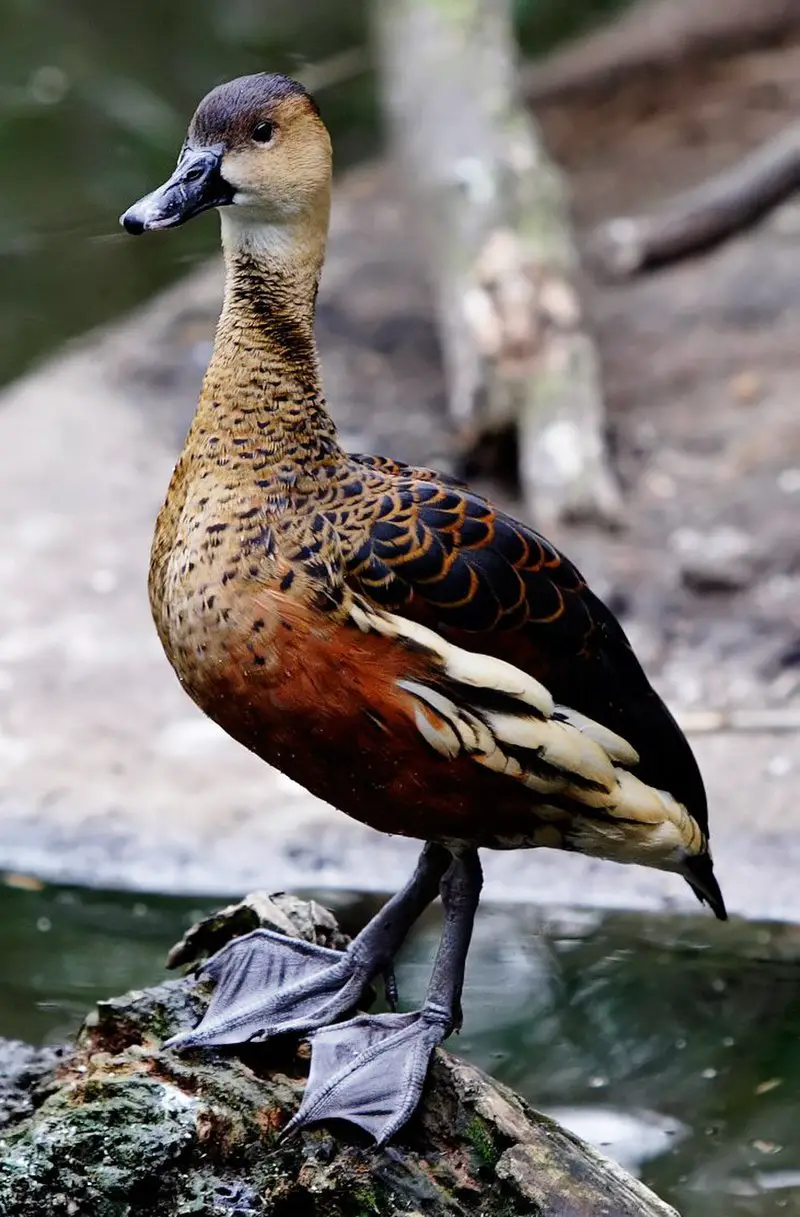
The Wandering whistling duck, also known as Dendrocygna arcuata, is a kind of whistling duck that is found in tropical and subtropical regions of several countries including Australia, the Philippines, Borneo, Indonesia, Papua New Guinea, and the Pacific Islands.
This bird has three subspecies – D. a. arcuata (Indonesian wandering whistling duck), D. a. australis (Australian wandering whistling duck) and D. a. pygmaea (New B).
It is known for its whistling calls that can be heard from a long distance. These ducks are known to feed on seeds, insects, and other small aquatic organisms.
They prefer living near wetlands, rivers, and lakes. The Wandering whistling duck is considered an important species due to its ecological and conservation value.
Scientific classification:
| Kingdom | Animalia |
| Phylum | Chordata |
| Class | Aves |
| Order | Anseriformes |
| Family | Anatidae |
| Genus | Dendrocygna |
| Species | D. arcuata |
Also Featured In: New South Wales Birds You Need to See, Native Birds Of Mackay
32. Kagu
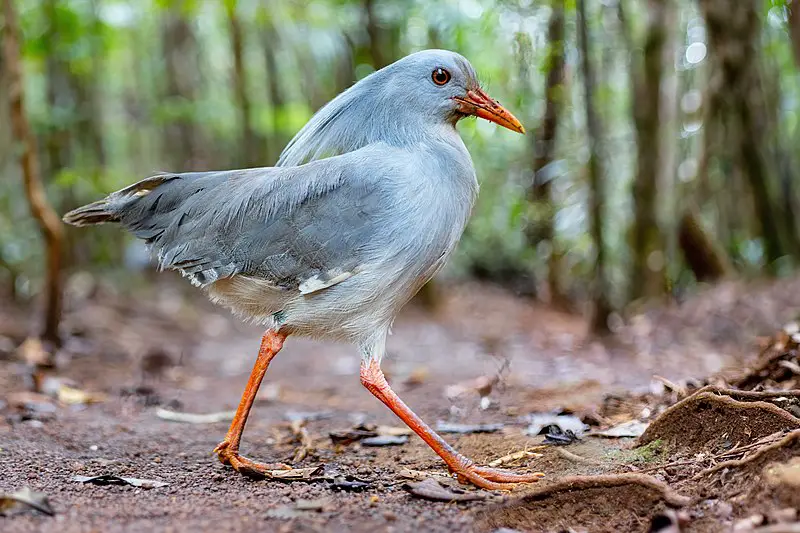
The Kagu or Cagou is a unique bird found only in the dense mountain forests of New Caledonia.
It is the last surviving member of the Rhynochetidae family, with pale grey plumage, bright red legs, and a striking crest atop its head.
Measuring 55 cm in length, it is known for its distinctive mating calls and unusual vocal mimicry abilities.
The Kagu is critically endangered and faces threats from habitat loss and introduced predators, making conservation efforts crucial for its survival.
Being an important symbol of New Caledonian culture, the Kagu is often featured in art and mythology.
Efforts are being made to protect this rare and fascinating bird, including captive breeding programs and habitat preservation initiatives.
Scientific classification:
| Kingdom | Animalia |
| Phylum | Chordata |
| Class | Aves |
| Order | Eurypygiformes |
| Family | Rhynochetidae |
| Genus | Rhynochetos |
| Species | R. jubatus |
33. New Caledonian Rail
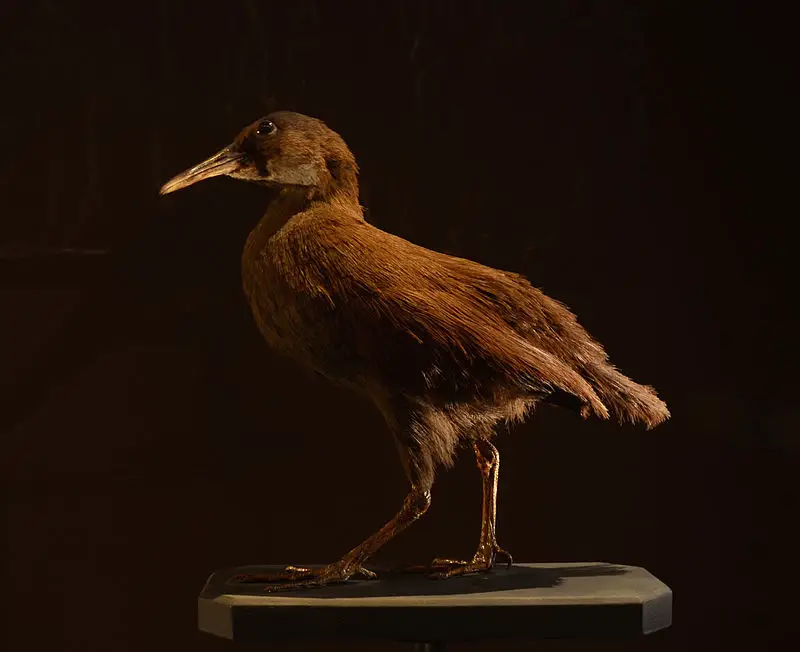
The New Caledonian rail is a flightless bird that is found exclusively on the island of New Caledonia. This drab-looking bird has a dull brown color on its upper body and grey feathers underneath.
Its unique feature is its downward-curving, yellowish beak. Despite extensive research, nothing is known about its vocalizations or whether it is active during the night or at dawn or dusk.
Unfortunately, the New Caledonian rail is believed to have become extinct due to predation by feral cats.
Despite efforts to protect the species, the bird was unable to recover from the effects of predation and habitat destruction by humans.
The New Caledonian rail serves as a reminder of how vulnerable and easily threatened bird species are on small islands with limited habitats.
Scientific classification:
| Kingdom | Animalia |
| Phylum | Chordata |
| Class | Aves |
| Order | Gruiformes |
| Family | Rallidae |
| Genus | Cabalus |
| Species | C. lafresnayanus |
34. New Caledonian Lorikeet
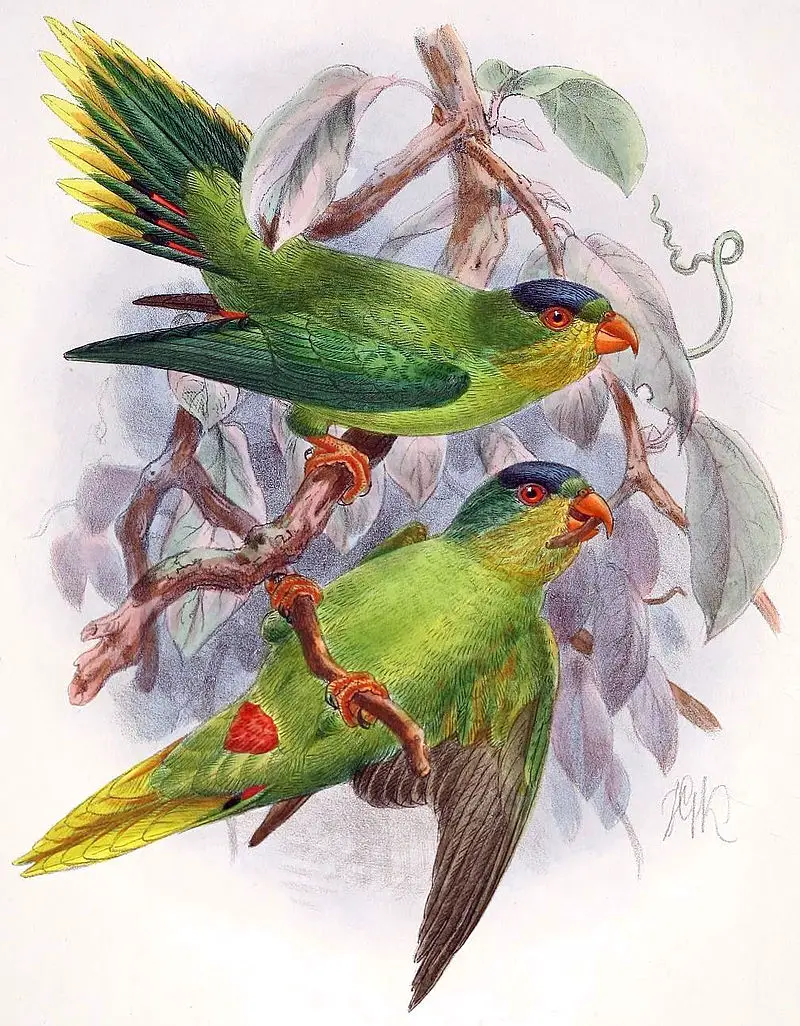
The New Caledonian lorikeet is a brightly-colored bird endemic to the Melanesian island of New Caledonia.
It was once assigned to the Charmosyna genus, but has been recently reclassified as a Vini based on molecular studies of lorikeets.
Sadly, the New Caledonian lorikeet is believed to be potentially extinct – meaning that it is no longer seen in the wild and may be gone forever.
This is a tragic loss, as this beautiful bird was a unique part of the island’s biodiversity.
While we may never be able to see the New Caledonian lorikeet again, we can work to protect and conserve other endangered species in the hopes of preventing similar losses in the future.
Scientific classification:
| Kingdom | Animalia |
| Phylum | Chordata |
| Class | Aves |
| Order | Psittaciformes |
| Family | Psittaculidae |
| Genus | Vini |
| Species | V. diadema |
35. Uvea Parakeet
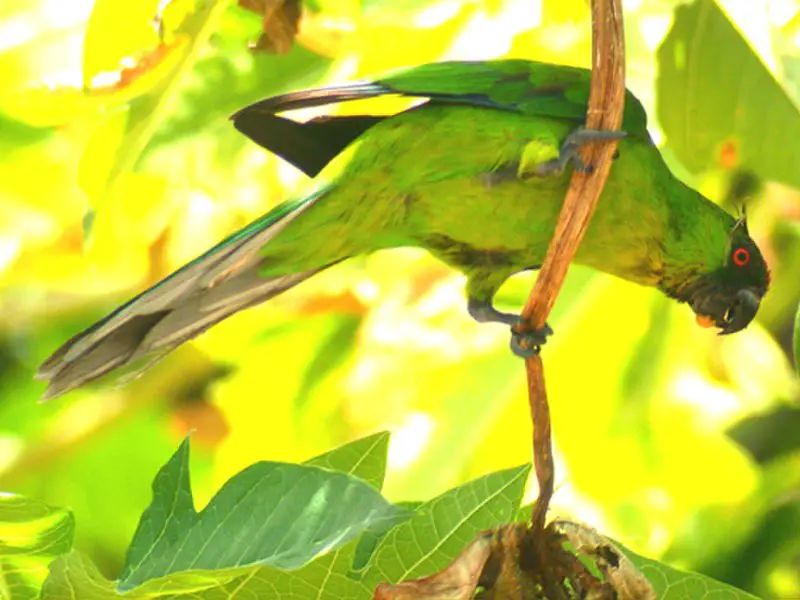
The Uvea Parakeet, also known as the Ouvea Parakeet, is a type of parrot found only on the island of Uvea in the Loyalty Islands of New Caledonia.
It belongs to the family Psittaculidae and is a separate species from the horned parakeet of Grande Terre.
This medium-sized parakeet has a colorful plumage and distinctive features such as a curved beak and sharp claws used for climbing trees.
Due to habitat destruction and hunting by humans and introduced predators, the Uvea Parakeet is listed as endangered on the IUCN Red List.
Conservation efforts are ongoing to protect these birds and their unique island habitat.
Scientific classification:
| Kingdom | Animalia |
| Phylum | Chordata |
| Class | Aves |
| Order | Psittaciformes |
| Family | Psittaculidae |
| Genus | Eunymphicus |
| Species | E. uvaeensis |
36. New Caledonian Owlet-Nightjar
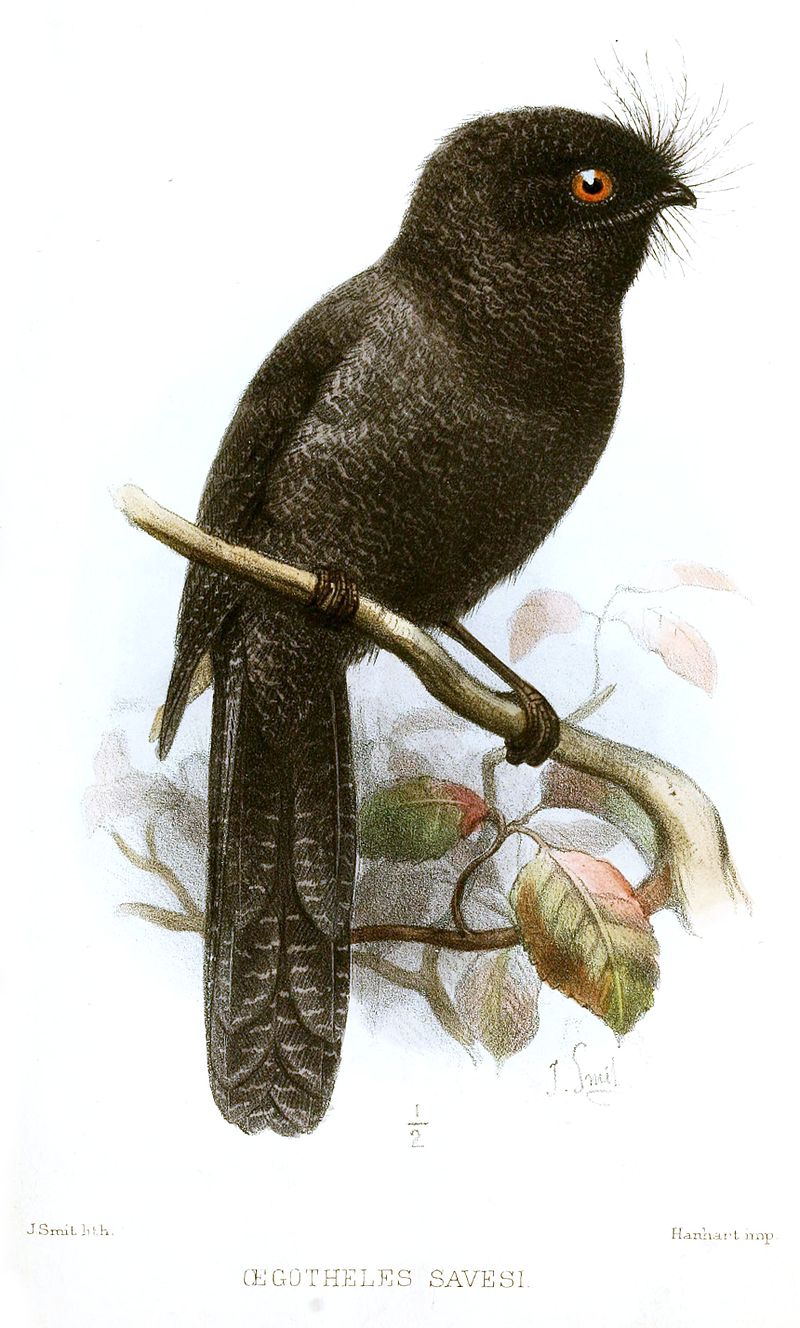
The New Caledonian Owlet-nightjar is a unique bird with a distinct appearance. It boasts vermiculated grey-brown and black plumage that sets it apart from other owlet-nightjar species.
This bird has a long but slightly rounded tail, and its wings are short and rounded. The New Caledonian Owlet-nightjar also has long and stout legs that help it walk and maneuver in its habitat.
Although its call is unknown, most owlet-nightjar species make churring and whistling sounds.
The bird is the second-largest known owlet-nightjar, with only a few sizes larger than this bird.
Its overall size and features make it an enigmatic species that bird enthusiasts would love to see in the wild.
Scientific classification:
| Kingdom | Animalia |
| Phylum | Chordata |
| Class | Aves |
| Clade | Strisores |
| Order | Aegotheliformes |
| Family | Aegothelidae |
| Genus | Aegotheles |
| Species | A. savesi |
37. Crow Honeyeater
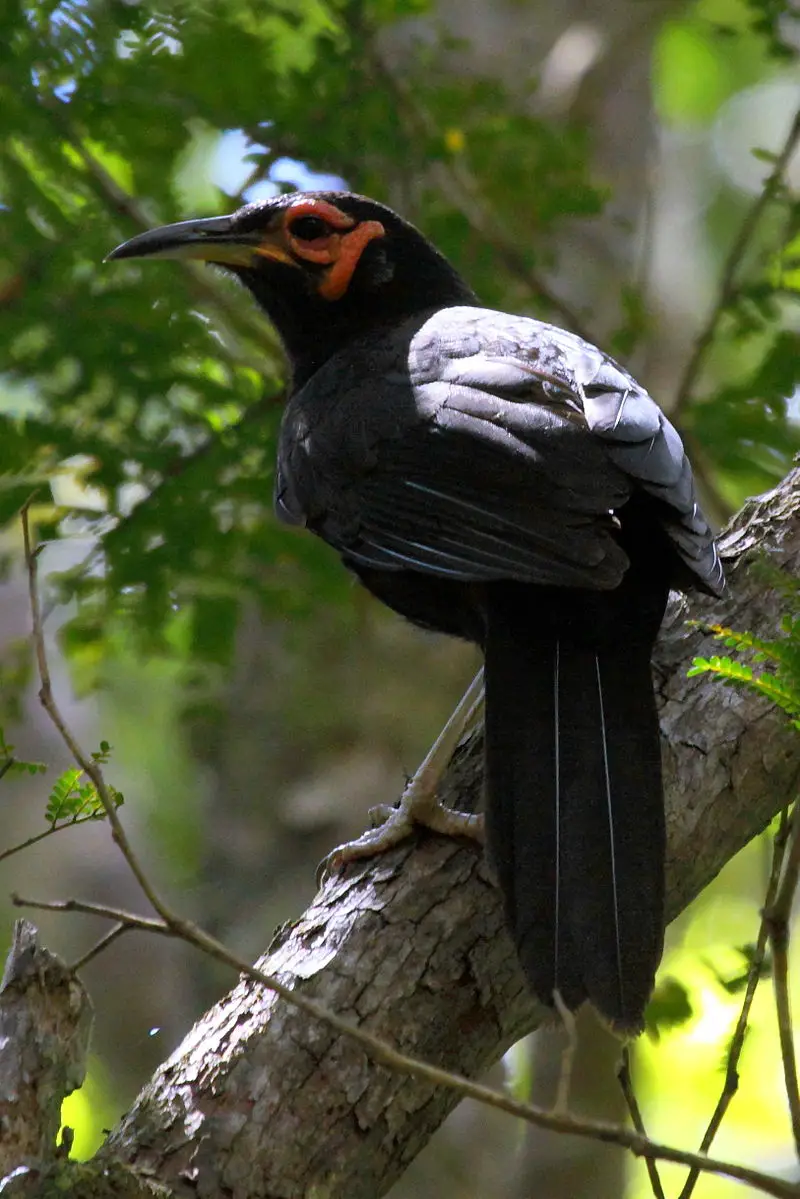
The Crow Honeyeater bird is native to humid forests in New Caledonia. This species of bird is one of the largest honeyeaters and can measure up to 42.5 cm in length.
With its glossy black plumage and curved beak, it looks similar to a crow. The beak is long and bicolor, and it has orange facial wattles. It has long, rounded wings and a long tail and neck.
This bird is unique to the South Pacific and is a vital part of the ecosystem. Its size and appearance make it different from other honeyeater species.
Crow Honeyeaters play an important role in pollinating and distribution of nectar, making them a critical species for New Caledonia’s natural system.
Scientific classification:
| Kingdom | Animalia |
| Phylum | Chordata |
| Class | Aves |
| Order | Passeriformes |
| Family | Meliphagidae |
| Genus | Gymnomyza |
| Species | G. aubryana |
38. Horned Parakeet
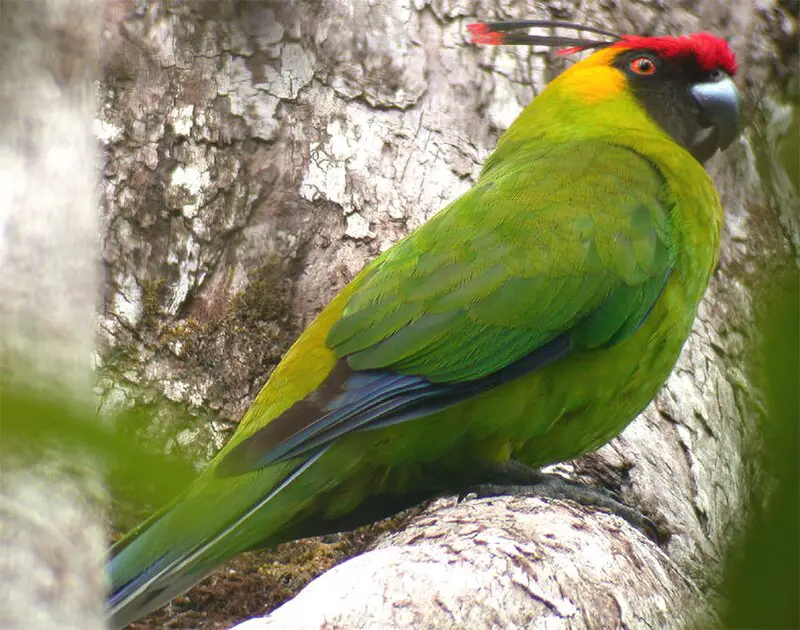
The Horned Parakeet is a medium-sized parrot that is native to New Caledonia. This bird is unique due to the two black feathers that protrude from its head, which have red tips, giving it the name “horned.”
The species is scientifically known as Eunymphicus cornutus and falls under the family Psittaculidae.
The Horned Parakeet was first described by the German naturalist Johann Friedrich Gmelin in 1788. As an endemic species to New Caledonia, the Horned Parakeet is at risk of endangerment due to habitat loss and degradation.
Thus, through conservation efforts, researchers aim to protect the Horned Parakeet and its habitat.
Scientific classification:
| Kingdom | Animalia |
| Phylum | Chordata |
| Class | Aves |
| Order | Psittaciformes |
| Family | Psittaculidae |
| Genus | Eunymphicus |
| Species | E. cornutus |
39. New Caledonian Crow
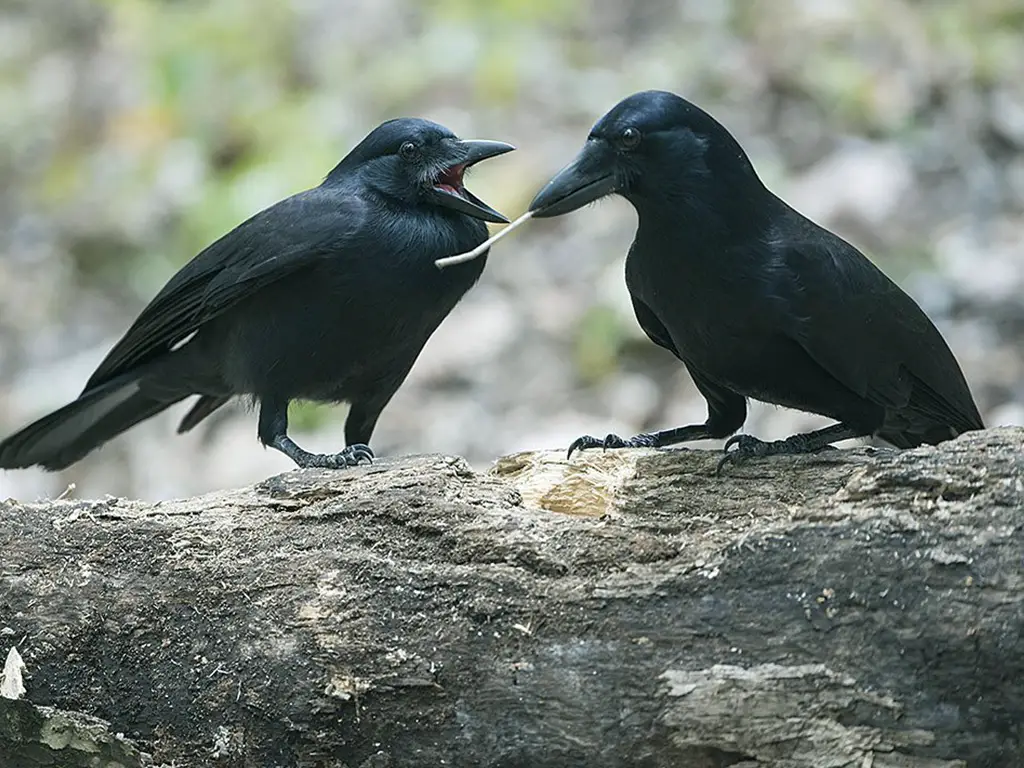
The New Caledonian crow, found in the islands of New Caledonia, is known for its unique call, often described as “qua-qua.” As omnivores, they have a varied diet including insects, eggs, small mammals, nuts, and seeds.
They also exhibit clever behavior, using sticks to extract insects from crevices and even crafting their own tools to reach food. These birds have been observed using hooks made from plant materials to extract prey, showcasing a high level of problem-solving abilities.
In addition, they have the ability to recognize human faces, displaying intelligence that is rare in the avian world. The New Caledonian crow is a fascinating and intelligent bird species, appreciated not only for its beauty but also for its remarkable abilities.
Scientific classification:
| Kingdom | Animalia |
| Phylum | Chordata |
| Class | Aves |
| Order | Passeriformes |
| Family | Corvidae |
| Genus | Corvus |
| Species | C. moneduloides |
40. White-Bellied Goshawk
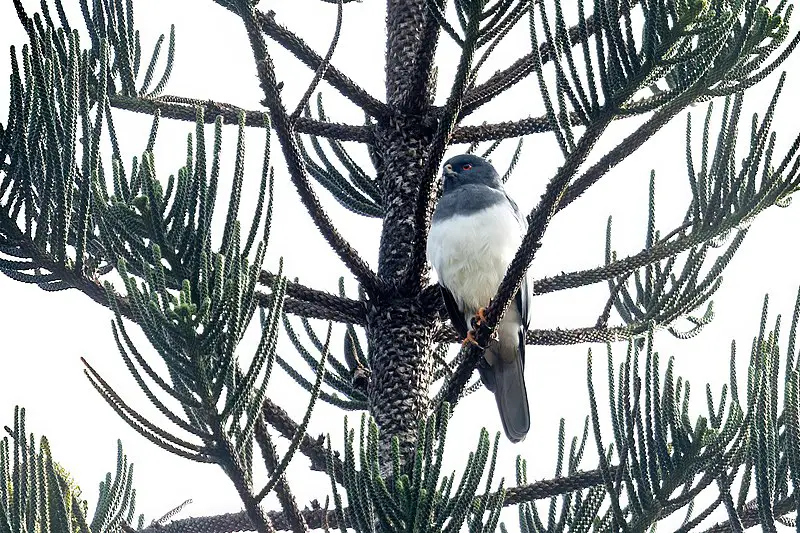
The White-bellied goshawk, also known as the New Caledonia goshawk, is a bird of prey endemic to New Caledonia.
Its natural habitats include subtropical or tropical moist lowland forest, subtropical or tropical moist montane forest, dry savanna, and heavily degraded former forest.
The species is also referred to as the New Caledonia sparrowhawk. As a predator, the White-bellied goshawk hunts for food in the forests of New Caledonia, relying on its keen eyesight to locate prey.
Despite its adaptation to degraded forests, the species faces threats from habitat destruction and hunting.
Efforts have been made to conserve the White-bellied goshawk and its habitat in order to protect this unique bird species.
Scientific classification:
| Kingdom | Animalia |
| Phylum | Chordata |
| Class | Aves |
| Order | Accipitriformes |
| Family | Accipitridae |
| Genus | Accipiter |
| Species | A. haplochrous |
41. New Caledonian Myzomela
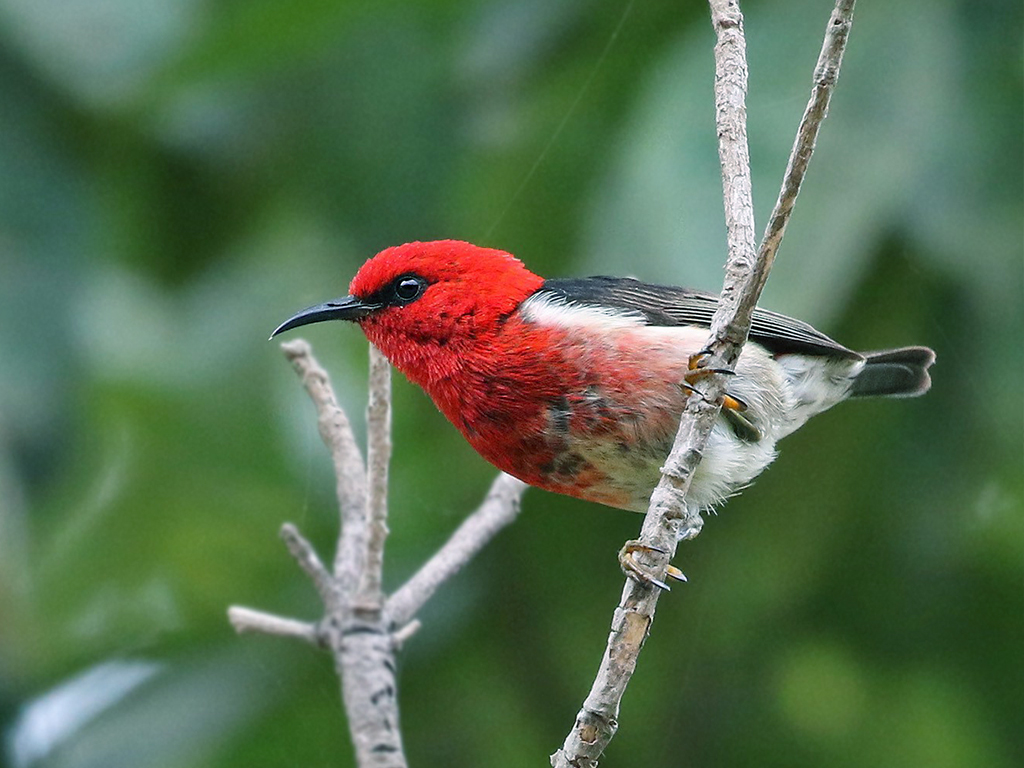
The New Caledonian myzomela is a bird from the honeyeater family. It is found only in New Caledonia, specifically on the islands of Grande Terre and the Isle of Pines.
This species inhabits humid rainforests and stunted hills. Interestingly, there is debate over whether or not the New Caledonian myzomela is the same species as the scarlet myzomela found in Australia.
Despite its limited distribution, the New Caledonian myzomela is a beautiful and unique bird that is surely treasured by those who have the chance to observe it in its natural habitat.
Scientific classification:
| Kingdom | Animalia |
| Phylum | Chordata |
| Class | Aves |
| Order | Passeriformes |
| Family | Meliphagidae |
| Genus | Myzomela |
| Species | M. caledonica |
42. New Caledonian Friarbird
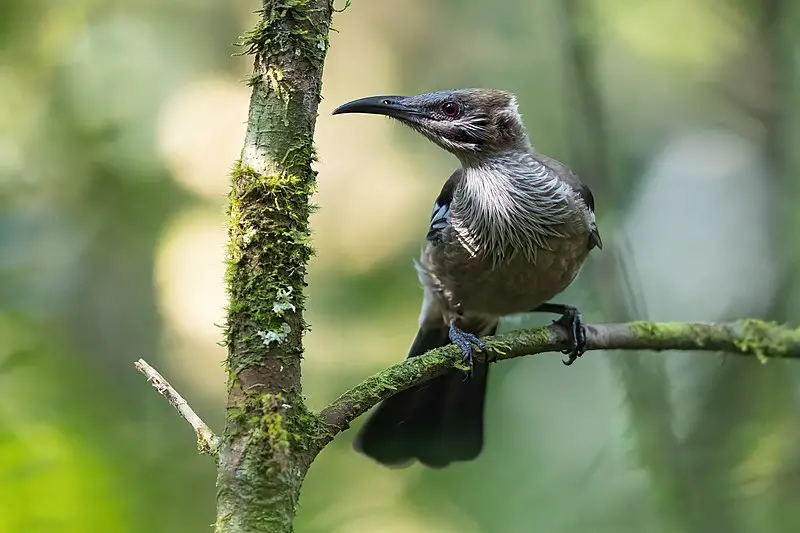
The New Caledonian friarbird is a bird species found only in New Caledonia. Belonging to the Meliphagidae family, this bird is known for its distinct beak and coloration.
It is mostly black with a yellow head and nape, as well as a red eye patch. The friarbird is predominantly a fruit eater, but it also feeds on nectar and insects. It is known to be a vocal bird, using a variety of calls including a harsh cawing sound.
Like many other bird species, the New Caledonian friarbird faces threats from habitat loss and fragmentation, as well as predation by introduced mammals like rats and cats. However, conservation efforts are being made to protect the species and its habitat.
Despite its limited distribution, the friarbird is an important member of New Caledonia’s unique avian community.
Scientific classification:
| Kingdom | Animalia |
| Phylum | Chordata |
| Class | Aves |
| Order | Passeriformes |
| Family | Meliphagidae |
| Genus | Philemon |
| Species | P. diemenensis |
43. Green-Backed White-Eye
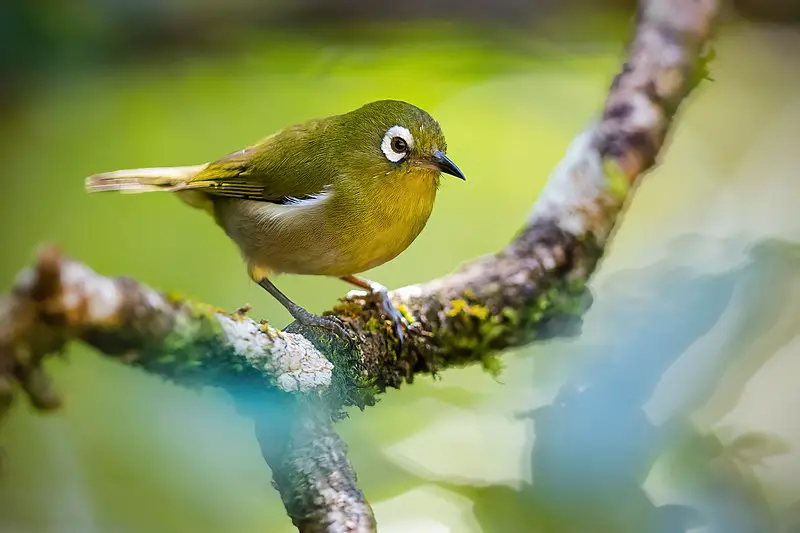
The Green-backed white-eye, also known as the New Caledonian white-eye, is a type of bird that belongs to the Zosteropidae family. George Robert Gray was the first to describe it in 1858.
This species is endemic to New Caledonia and has a green back that makes it easily recognizable. Its relationship with other white-eyes is uncertain, but it may form a superspecies with them.
These birds are often found in forests, gardens, and other types of vegetation. They have a small size and are known for their agility and fast movements. These birds feed on nectar, fruits, and insects.
The Green-backed white-eye is a beautiful bird that adds to the diversity of New Caledonia’s fauna.
Scientific classification:
| Kingdom | Animalia |
| Phylum | Chordata |
| Class | Aves |
| Order | Passeriformes |
| Family | Zosteropidae |
| Genus | Zosterops |
| Species | Z. xanthochroa |
44. Yellow-Bellied Flyrobin
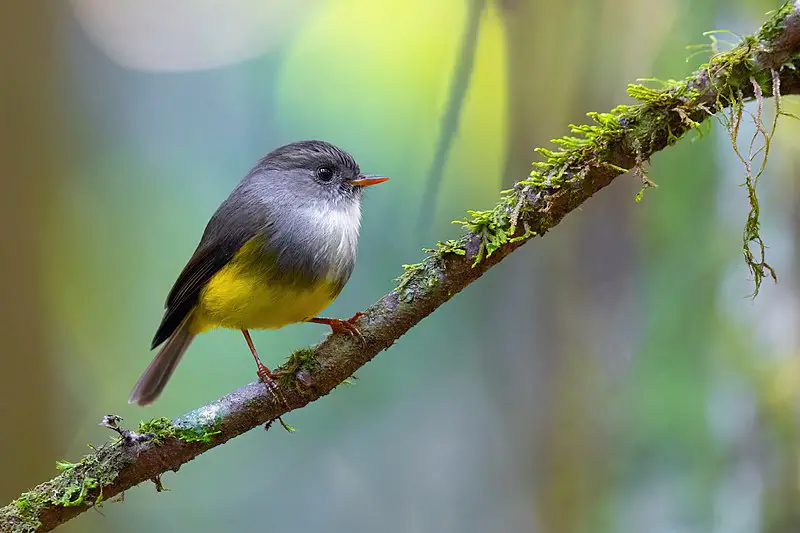
The Yellow-bellied flyrobin is a unique bird species that belongs to the Petroicidae family. This bird is the only representative in the Cryptomicroeca genus and can be found solely in New Caledonia.
The bird occupies various types of habitats, from dry lowlands to humid forests, and can be spotted in woodlands, Pinus forests, and Pandanus forests.
The Yellow-bellied flyrobin is known for its distinctive yellow belly, which serves as a distinguishing feature from other flyrobin species.
Observing the neotropical bird’s behavior is fascinating as they are known for being territorial, and male birds will defend their claim and sing nearby the territory. The Yellow-bellied flyrobin’s diet includes a variety of insects, fruits, and seeds.
In addition, this bird has a symbolic significance to the ecosystem where it resides, as it plays a vital role in pollination and seed dispersal.
Scientific classification:
| Kingdom | Animalia |
| Phylum | Chordata |
| Class | Aves |
| Order | Passeriformes |
| Family | Petroicidae |
| Genus | Cryptomicroeca Christidis, Irestedt, Rowe, Boles & Norman, 2012 |
| Species | C. flaviventris |
45. Large Lifou White-Eye
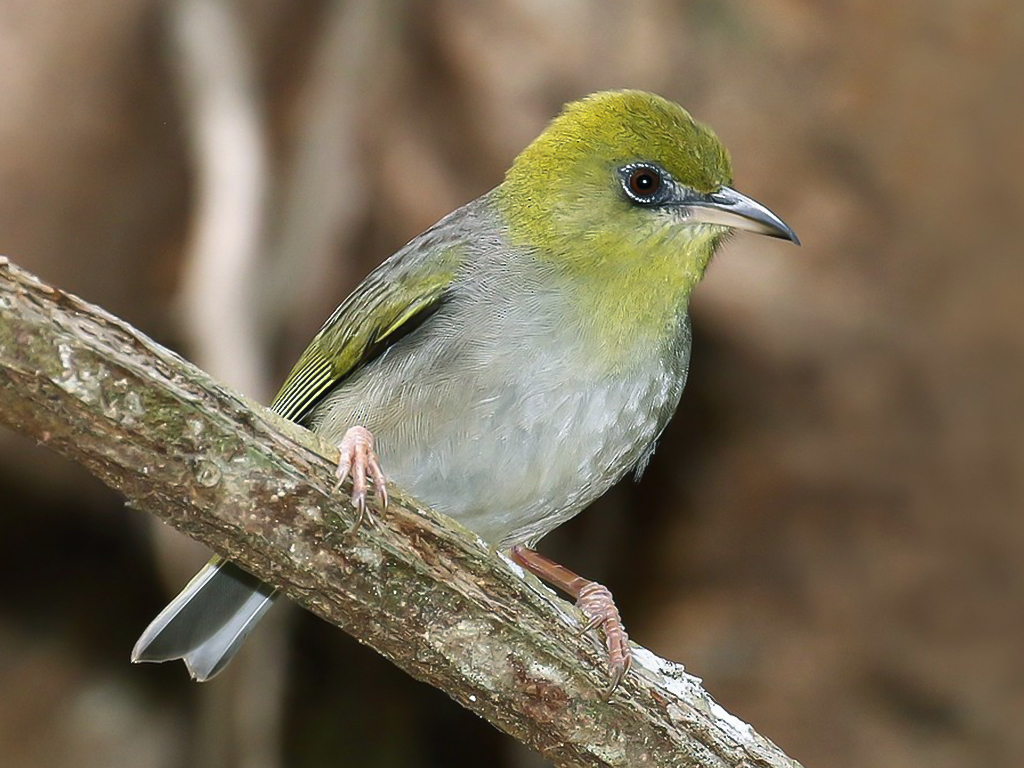
The Large Lifou white-eye bird is a unique bird that belongs to the Zosteropidae family. This bird species is found only in New Caledonia and is known for its striking appearance.
It is a small bird with an impressive white plumage that covers its body. The bird got its name from Lifou Island, where it was first discovered. The Large Lifou white-eye bird has unique features that make it easily recognizable.
It has a small head, a short bill, and a small black patch surrounding its eyes. This bird species is active and social, and often found in small groups. It feeds on insects and nectar and moves through forested areas in search of food.
The Large Lifou white-eye bird is a beautiful and fascinating bird that is a must-see for bird enthusiasts visiting New Caledonia.
Scientific classification:
| Kingdom | Animalia |
| Phylum | Chordata |
| Class | Aves |
| Order | Passeriformes |
| Family | Zosteropidae |
| Genus | Zosterops |
| Species | Z. inornatus |
46. Striated Starling
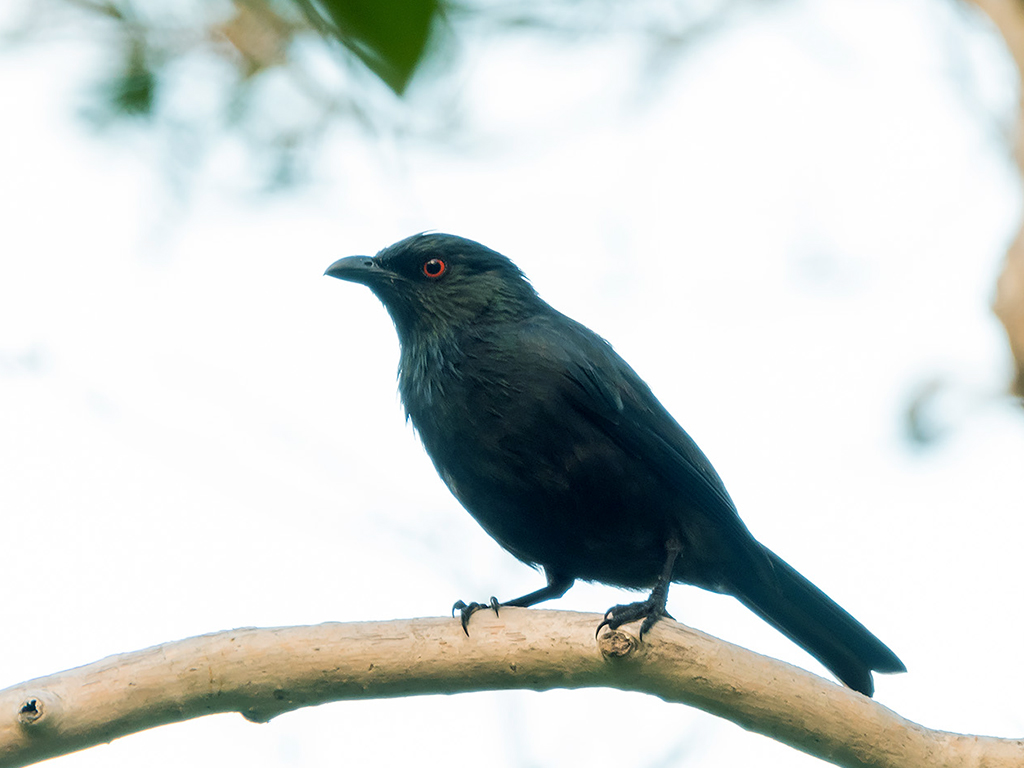
The Striated starling is a type of bird belonging to the Sturnidae family. It is found only in New Caledonia, making it an endemic species.
These birds are characterized by their unique striped appearance, which is why they are called “striated.” They have a sleek and slender appearance, with a black beak and legs.
The starling’s diet consists mainly of insects, fruits, and berries. Striated starlings are known for their complex songs and vocalization, which are used for communication and mating purposes.
These birds can be found in various habitats, including forests, savannas, and coastal areas. They are also known to gather in large flocks, particularly during the breeding season.
The striated starling is an important part of the New Caledonian ecosystem and serves as a key indicator species for local conservation efforts.
Scientific classification:
| Kingdom | Animalia |
| Phylum | Chordata |
| Class | Aves |
| Order | Passeriformes |
| Family | Sturnidae |
| Genus | Aplonis |
| Species | A. striata |
47. New Caledonian Cuckooshrike
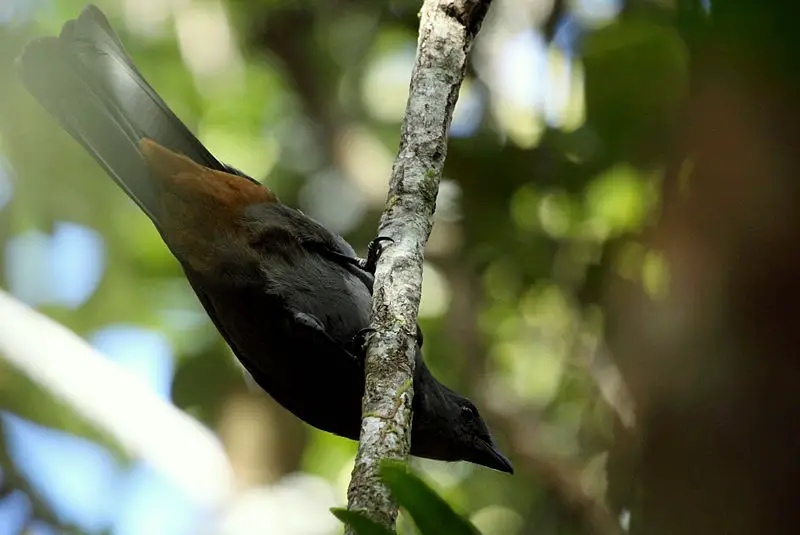
The New Caledonian cuckooshrike, also known as the New Caledonian cicadabird, is native to the island of New Caledonia. Belonging to the Campephagidae family, this bird prefers subtropical and tropical forest habitats.
Some researchers may classify it under the Analisoma genus. The New Caledonian cuckooshrike is endemic to the region, making it a unique species to the area. Its diet mainly consists of insects and other small prey.
Interestingly, the cuckooshrike is named after the behavior of the cuckoo bird, which lays its eggs in other bird’s nests.
While this bird does not exhibit cuckoo-like nesting behavior, its name suggests it may have some similarities in its breeding habits.
Overall, the New Caledonian cuckooshrike is a fascinating bird with a specific range and interesting classification history.
Scientific classification:
| Kingdom | Animalia |
| Phylum | Chordata |
| Class | Aves |
| Order | Passeriformes |
| Family | Campephagidae |
| Genus | Edolisoma |
| Species | E. anale |
48. New Caledonian Whistler
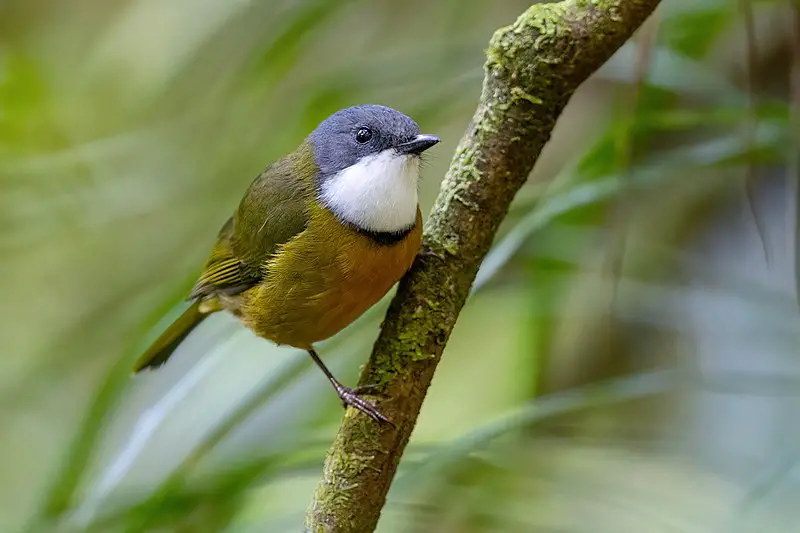
The New Caledonian whistler, belonging to the family Pachycephalidae, is found exclusively in New Caledonia. German biologist Johann Friedrich Gmelin first described this bird in 1789 while adding to Carl Linnaeus’s Systema Naturae.
The New Caledonian whistler was classified alongside flycatchers in the Muscicapa genus. Although relatively little is known about this bird species, it is known for its melodious whistles.
The New Caledonian whistler belongs to a family known for their distinctive vocalizations.
Given the population decline of this enigmatic bird, conservationists should work closely with ecologists to assess its status and develop strategies to protect its habitat.
As an endemic species, the New Caledonian whistler is an essential part of New Caledonia’s unique ecosystem, and protecting it is of utmost importance.
Scientific classification:
| Kingdom | Animalia |
| Phylum | Chordata |
| Class | Aves |
| Order | Passeriformes |
| Family | Pachycephalidae |
| Genus | Pachycephala |
| Species | P. caledonica |
49. Small Lifou White-Eye
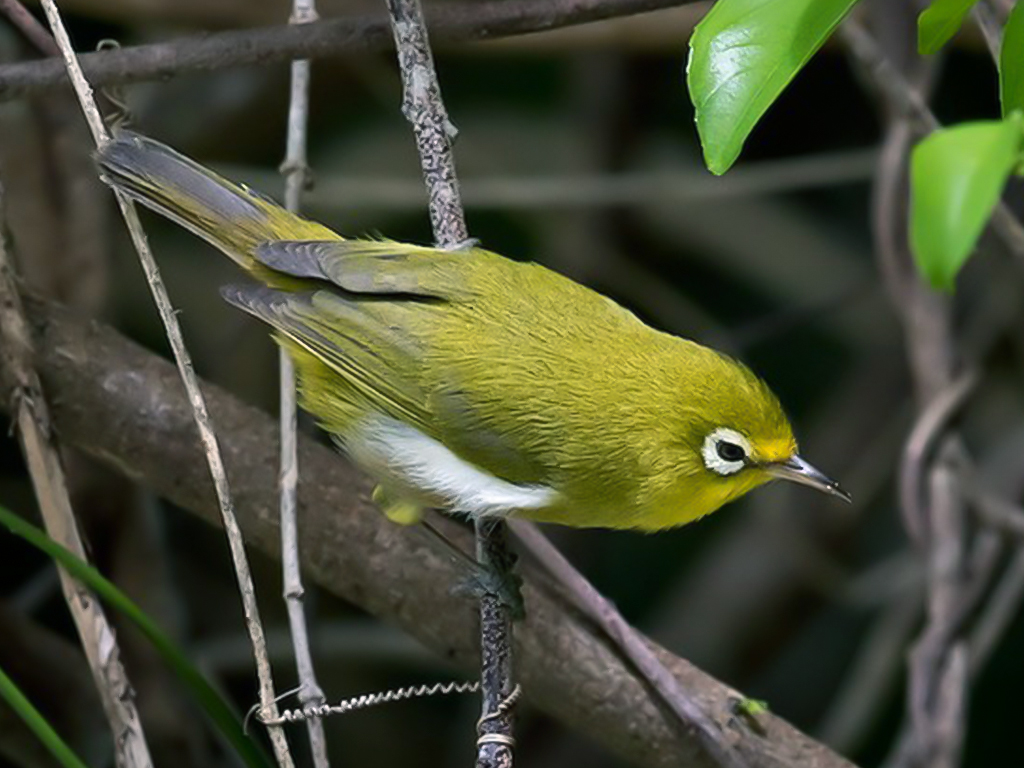
The Small Lifou white-eye bird is a native species of New Caledonia. It is commonly referred to as the sulphur white-eye due to the striking color of its feathers.
This tiny bird belongs to the Zosteropidae family and is known for its sharp, high-pitched chirping. As its name suggests, the Lifou white-eye bird is only found on the island of Lifou.
Despite its limited range, this bird is well-adapted to its environment and can thrive in a variety of natural habitats.
Bird enthusiasts often spot this species nesting in the lush foliage of trees and shrubs along the island’s coastline.
The Small Lifou white-eye is a true treasure of New Caledonia and a symbol of the country’s rich diversity of flora and fauna.
Scientific classification:
| Kingdom | Animalia |
| Phylum | Chordata |
| Class | Aves |
| Order | Passeriformes |
| Family | Zosteropidae |
| Genus | Zosterops |
| Species | Z. minutus |
50. New Caledonian Parakeet
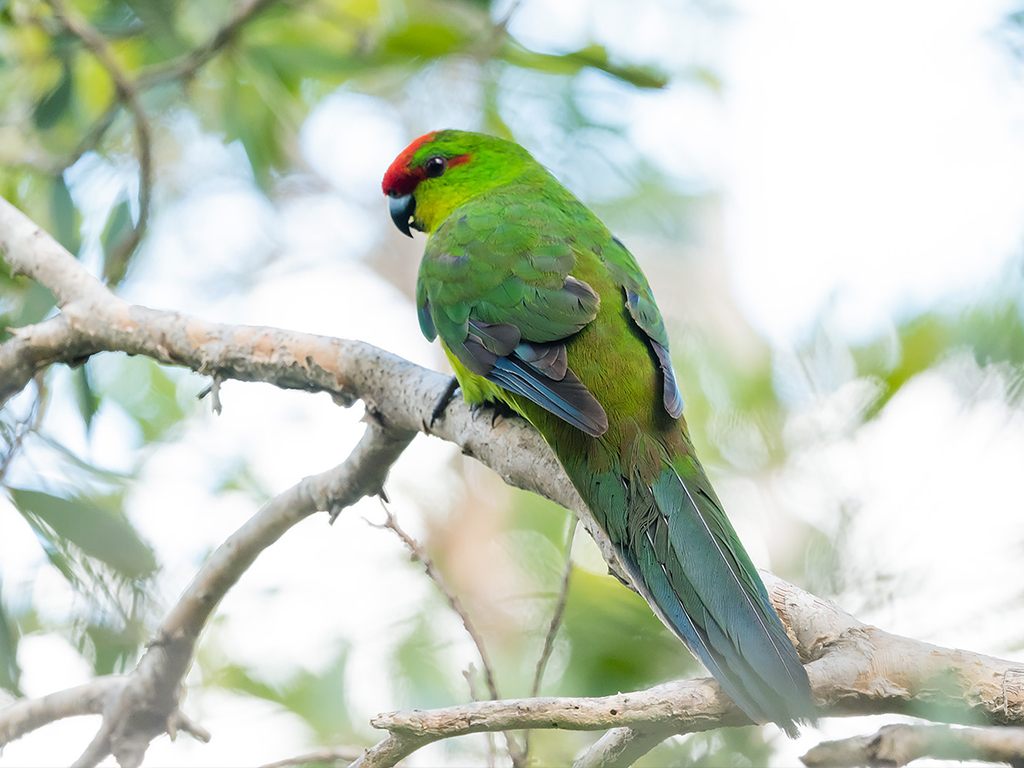
The New Caledonian parakeet, also known as the New Caledonian red-crowned parakeet, can be found exclusively in New Caledonia.
This species of parrot belongs to the family Psittaculidae and was originally thought to be the same as the red-fronted parakeet found in New Zealand.
However, it is now considered a separate species and is believed to be the oldest species in the Cyanoramphus genus.
This beautiful bird has a unique red crown and is a treat to observe in its native habitat. As an endemic species, it faces threats from habitat loss and predation by feral animals.
Conservation efforts are underway to protect the New Caledonian parakeet and ensure its long-term survival.
Scientific classification:
| Kingdom | Animalia |
| Phylum | Chordata |
| Class | Aves |
| Order | Psittaciformes |
| Family | Psittaculidae |
| Genus | Cyanoramphus |
| Species | C. saisseti |
51. Barred Honeyeater
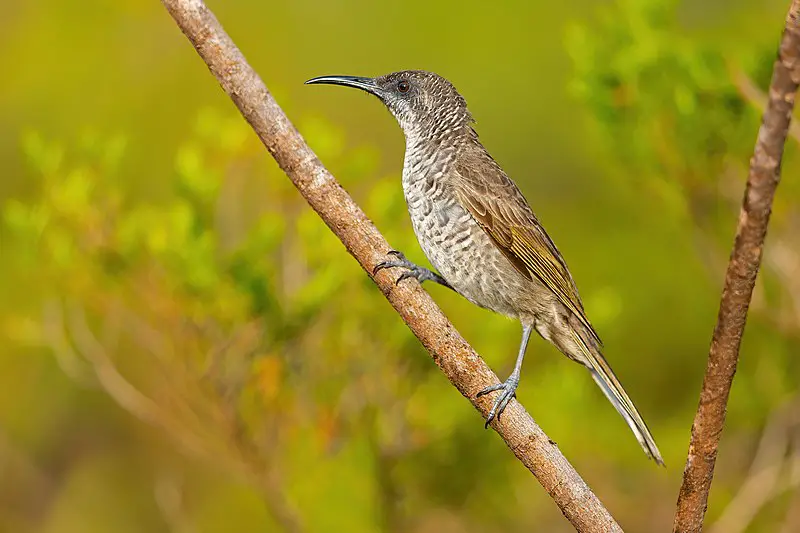
The Barred honeyeater is a unique bird species thriving only in New Caledonia. As a part of the Meliphagidae family, this bird’s body structure and size resemble the other species in its family.
However, it has a remarkable black and white striped pattern, which is where its common name ‘Barred honeyeater’ arises from. These birds mainly reside in the lowland forests, grasslands, and scrublands on the island.
They have a distinct diet of nectar, insects, and fruits. Moreover, the Barred honeyeater’s breeding season takes place between September to January.
During the nesting period, the male bird performs an elaborate courtship display as they try to impress their female counterparts.
Unfortunately, habitat destruction and deforestation have made the survival of this unique bird species challenging. Hence, it has become a conservation concern for the country’s wildlife authorities.
Scientific classification:
| Kingdom | Animalia |
| Phylum | Chordata |
| Class | Aves |
| Order | Passeriformes |
| Family | Meliphagidae |
| Genus | Glycifohia |
| Species | G. undulatus |